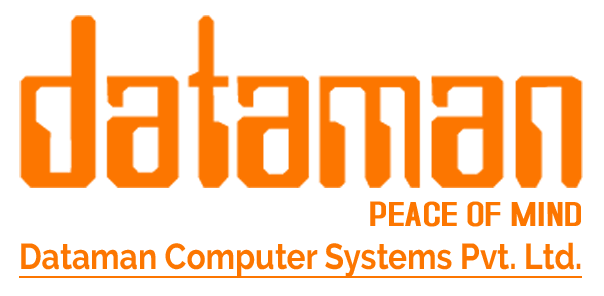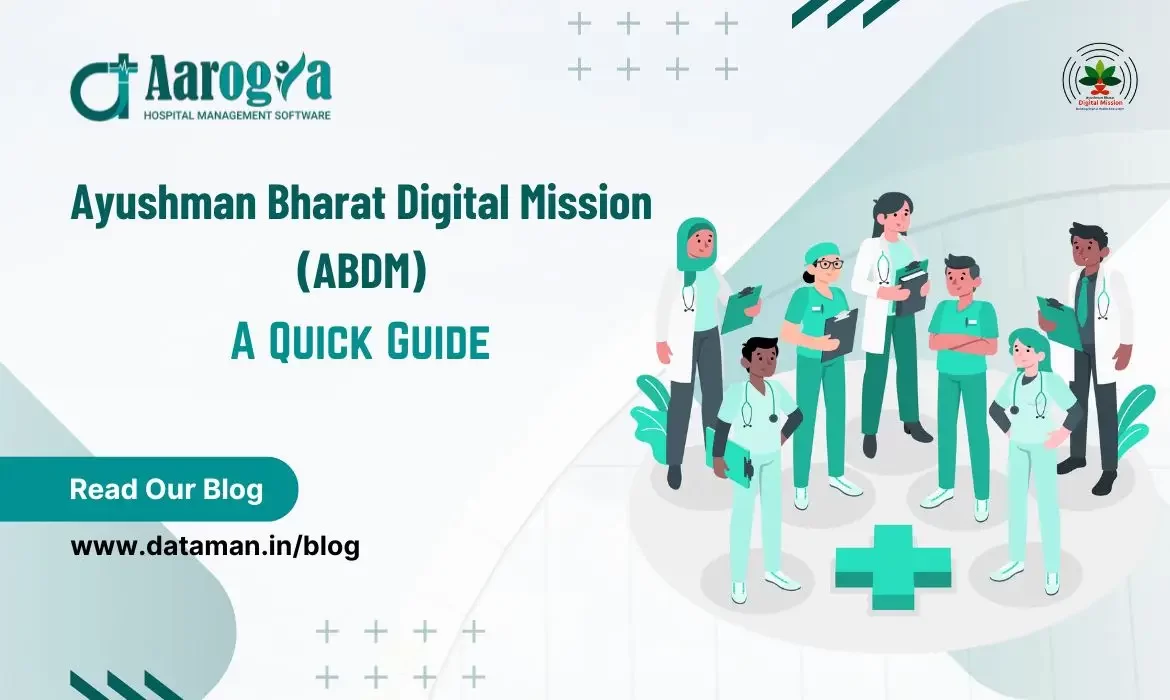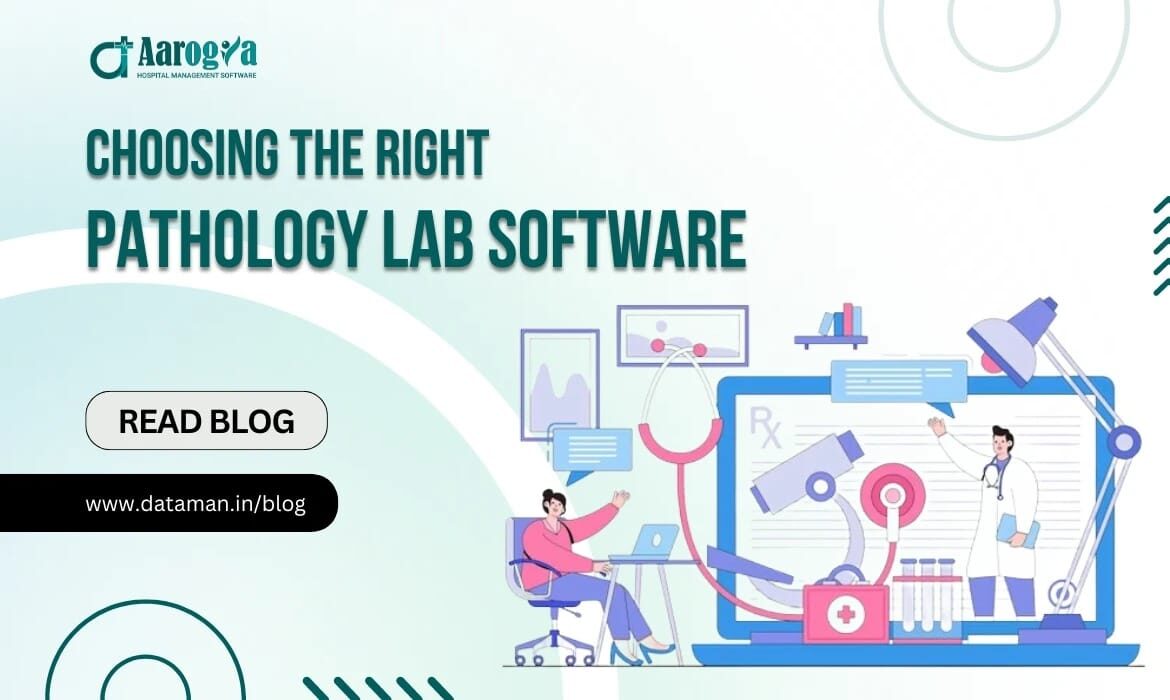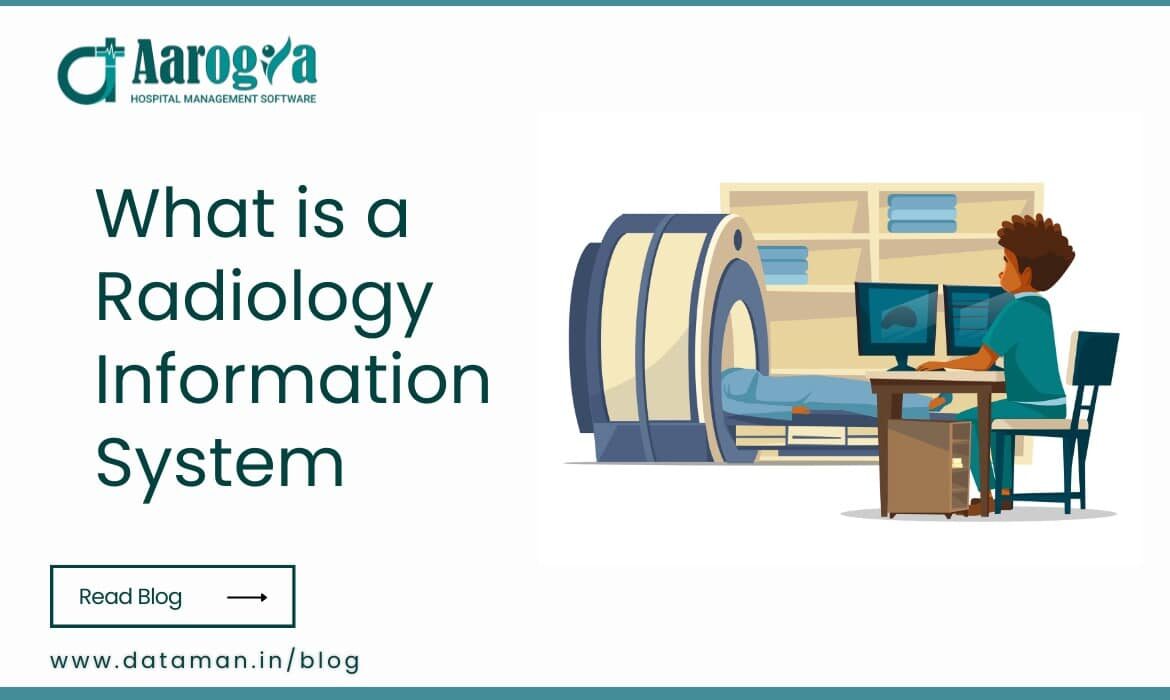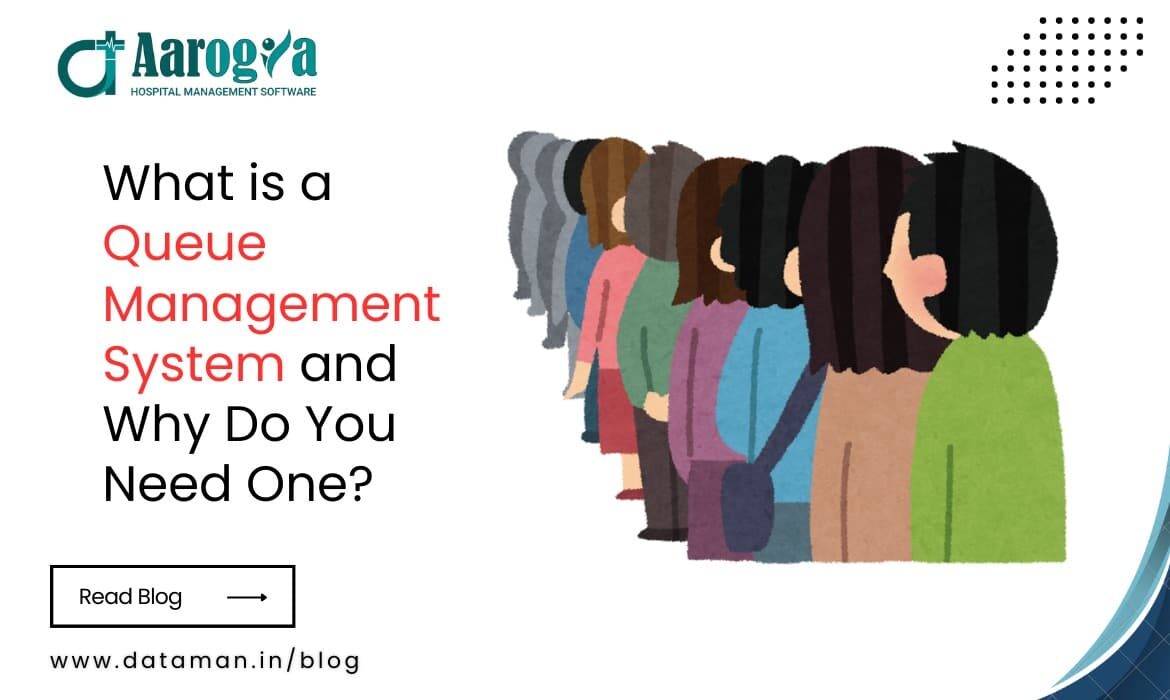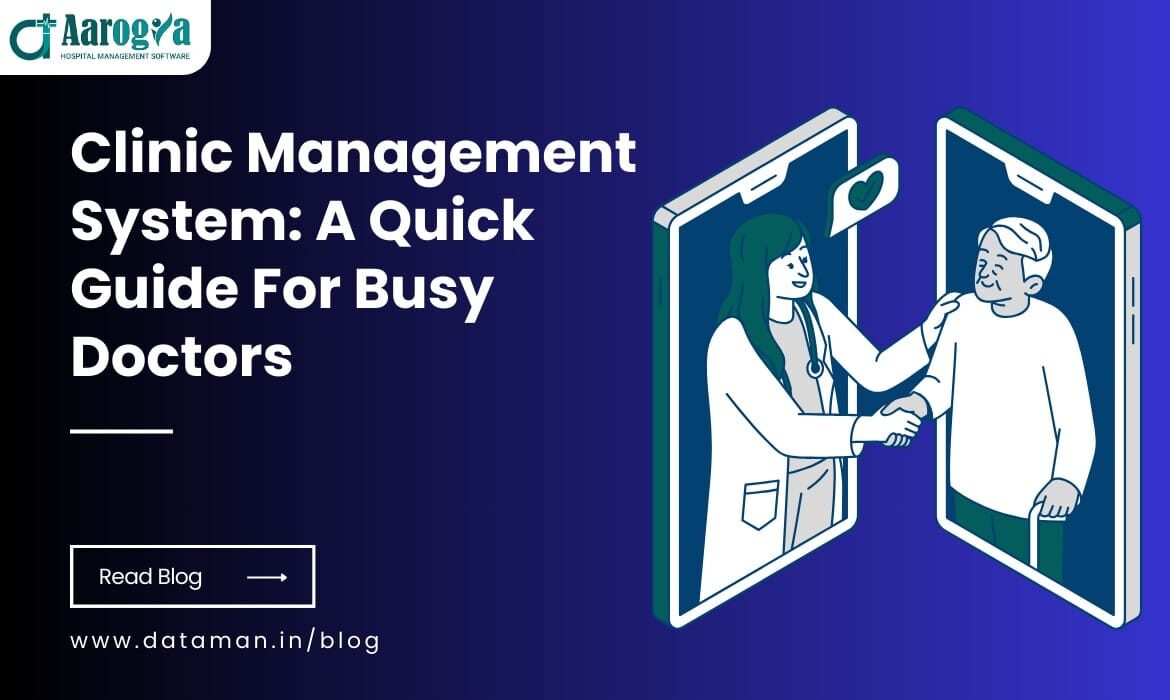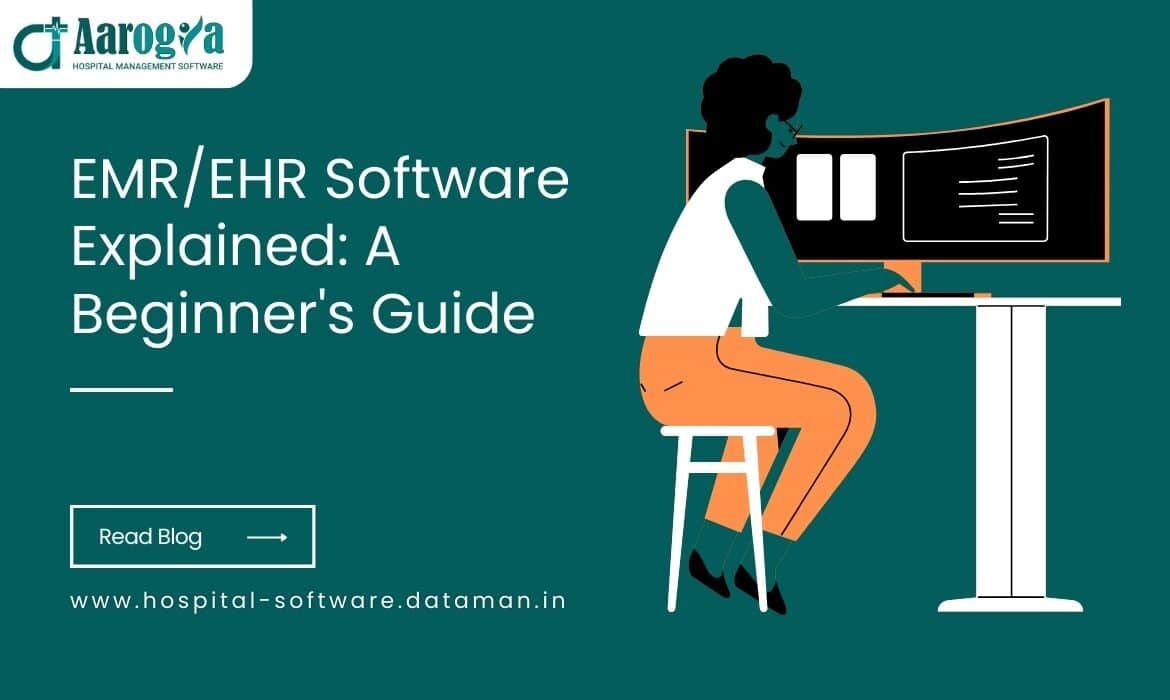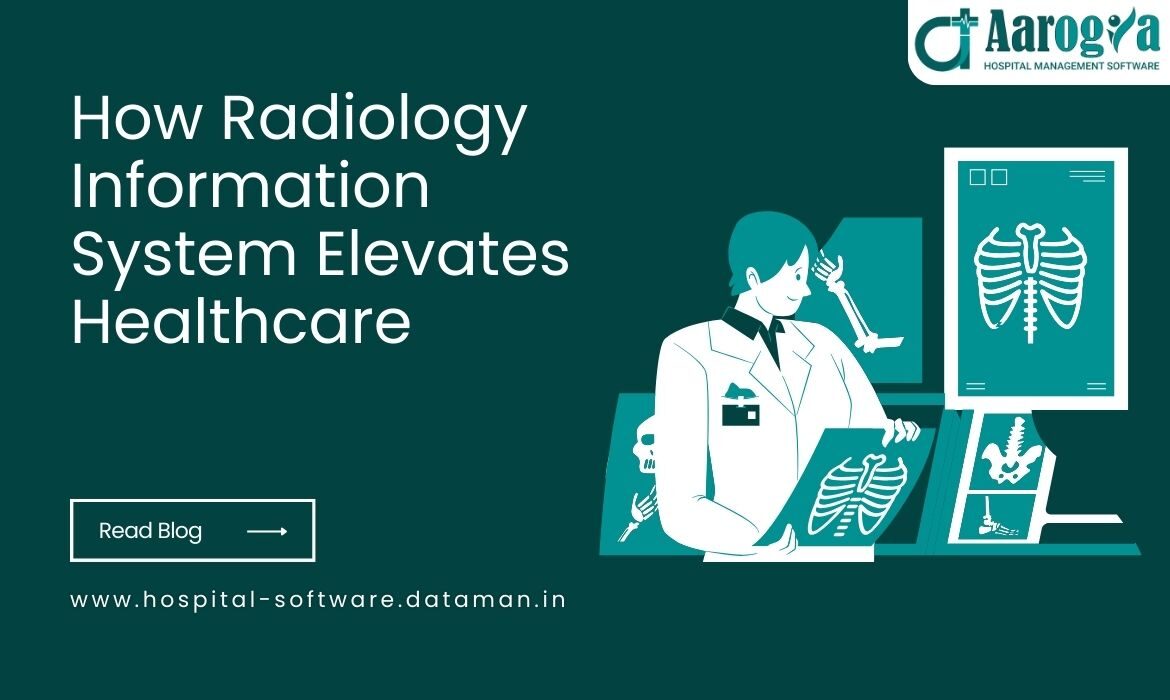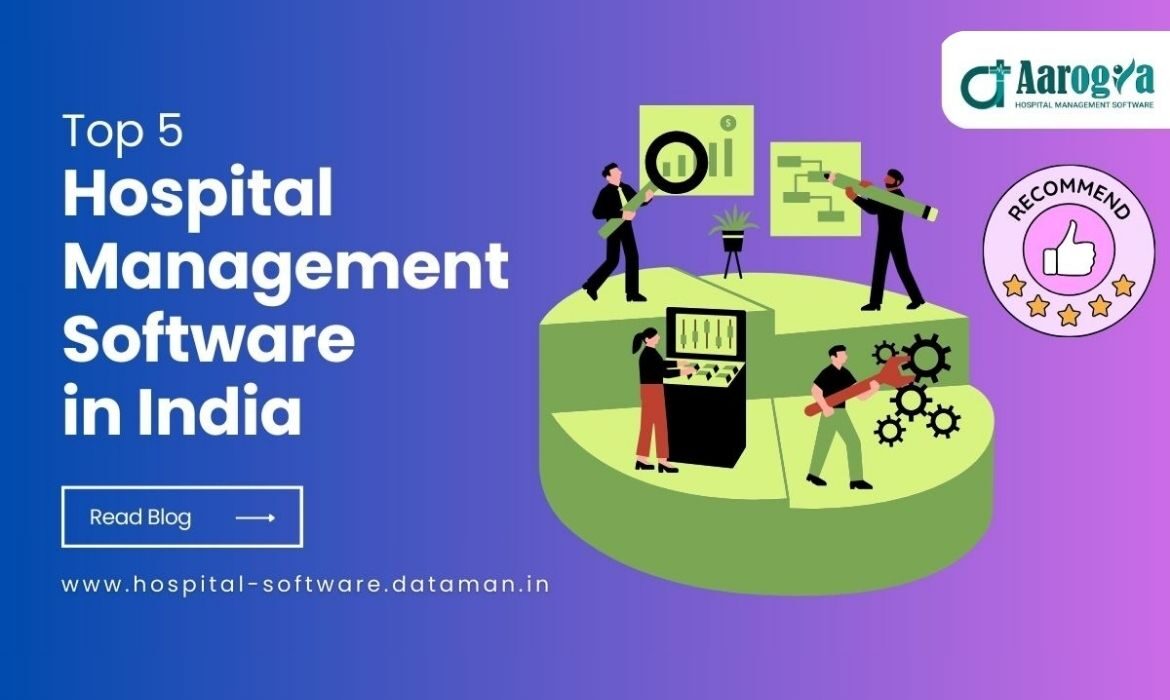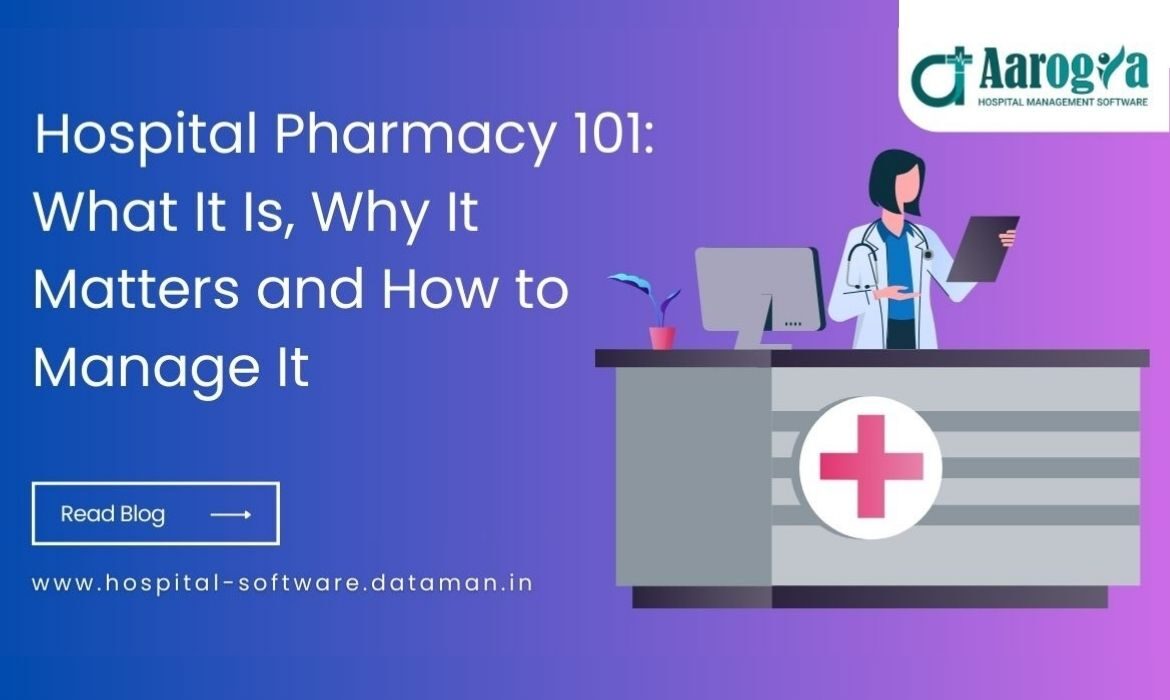Ayushman Bharat Digital Mission (ABDM): A Quick Guide
Ayushman Bharat Digital Mission (ABDM) is a flagship scheme of the Government of India launched by prime minister Narendra Modi on September 27, 2021 via video conferencing. The aim of the scheme is to improve access to quality healthcare in India in an efficient and transparent way for everyone. The mission focuses on creating a digital network for healthcare. Basically, it is a secure online system connecting patients, doctors and hospitals.
Let’s understand it with an example, suppose you are on a family vacation. Due to the change in weather conditions and food, you don’t feel well. Now, you need to see a doctor but at the same time you are worried that the doctor doesn’t know my medical history, allergies, previous lab reports etc.
This is where the Ayusman Bharat Digital Mission comes in. With the unified portal, the doctors can access all your medical history, test report, etc. and provide better medical treatment.
So, whether you’re a doctor, a hospital administrator, or a patient, this blog is for you! We’ll break down the ABDM in simple terms, guide you through the application process, and show you how to leverage this mission to improve your healthcare experience.
At A Glance
| Name of the Scheme | Ayushman Bharat Digital Mission (ABDM) |
Part Of | National Digital Health Mission (NDHM) |
Implemented | National Health Authority (NHA) |
Comes Under Which Ministry | Ministry of Health and Family Welfare |
| Launch Date of ABDM | 27 September 2021 |
Aim | Improve access to quality healthcare |
Website | https://abdm.gov.in/ |
Toll Free/Helpline Number | 14477 |
What Was the Need for Going Digital with ABDM?
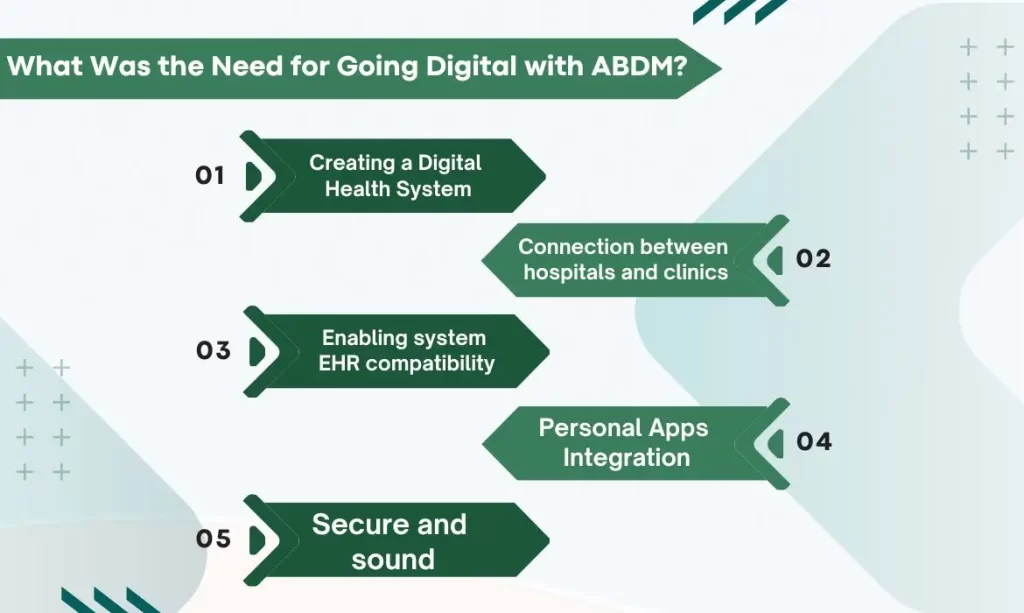
The Ayushman Bharat Digital Mission (ABDM) brings healthcare into the digital age, making it easier and more convenient for everyone in India. The reasons for going digital with ABDM are:
Creating a Digital Health System: ABDM gives every Indian a special 14-digit health ID. This ID stores your medical history, prescriptions, and test results – all in one safe place, accessible on your phone!
Connection between hospitals and clinics: Hospitals and clinics will be connected through a digital network. This means your new doctor can easily find your health information, no matter where you were treated before.
Enabling system EHR compatibility: Hospitals use EHR systems to automate their business operations and store patient data. ABDM will standardise the data storage formats so that Electronic Health Record (EHR) systems can share information to each other freely and efficiently.
Personal Apps Integration: You’ll be able to connect your health apps and wearables to ABDM. This way, your doctor can see your fitness data and give you better advice.
Secure and sound: All your health information will be digitally signed, making it tamper-proof and super secure.
Components of Ayushman Bharat Digital Mission
The Ayushman Bharat Digital Mission (ABDM) is like a giant digital toolbox for your health. It has five main parts that work together to make things easier for you and doctors:
ABHA: Your Unique Health ID
The key to unlocking this digital health ecosystem is your Ayushman Bharat Health Account (ABHA) number, previously known as a Health ID. It’s a unique 14-digit number that acts like your digital health passport. Just like your Aadhaar card identifies you, your ABHA ID identifies your health records. You can create your ABHA ID online or even at designated healthcare facilities. Creating an ABHA ID is voluntary and completely free.
Health Facility Registry (HFR)
The Health Facility Registry (HFR) is like an online list of trusted hospitals, labs, and clinics, similar to how you might find restaurants or shops on the internet. You can find good health facilities like hospitals, clinics, pathology labs, blood banks, etc. near you, and even see what other people say about them (if available). Healthcare facilities can add themself in the list by showing they are real and qualified.
Official website of ABDM shows, As of June 4, 2024, a total of 282,028 health facilities are registered in ABDM.
Healthcare Professionals Registry (HPR)
The Healthcare Professionals Registry (HPR) keeps track of all the doctors, nurses, and other healthcare workers. It checks their qualifications and training, so you know you’re in good hands. To be part of the ABDM network and access your health records, doctors need to be registered with the HPR. This will also connect private and government hospitals so your records can move seamlessly between them.
Unified Health Interface (UHI)
UHI creates a connected ecosystem for digital health services. This open network allows patients to easily access various healthcare providers through their chosen apps (EUAs). UHI facilitates appointment booking, teleconsultations, finding nearby services, and more, all in one place.
ABHA App
A personal health record (PHR) is like a secure digital vault for your health information. It’s an app that lets you control and keep track of all your medical details, including those of family members you’re authorized to manage. You can access and update this information anytime, anywhere, in a private and confidential way.
ABDM Architecture
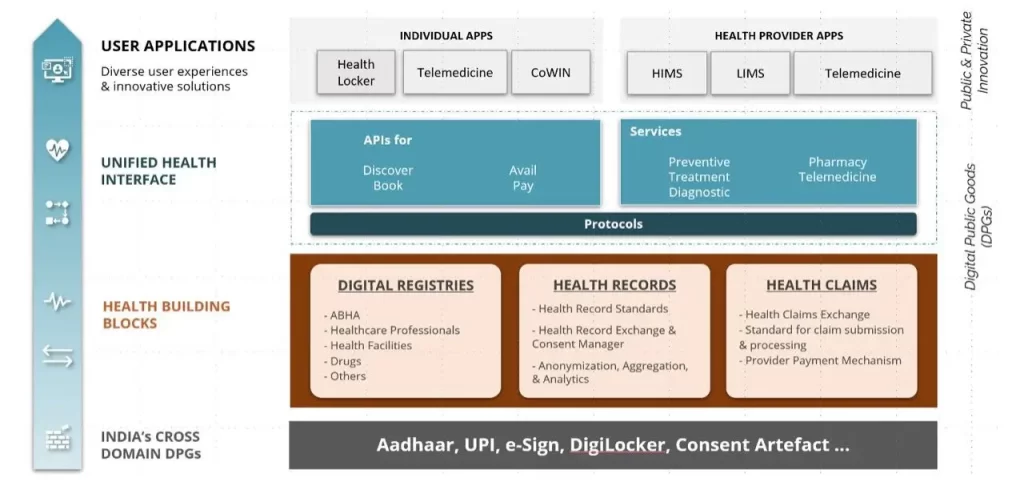
Source: abdm.gov.in
Benefits of Ayushman Bharat Digital Mission
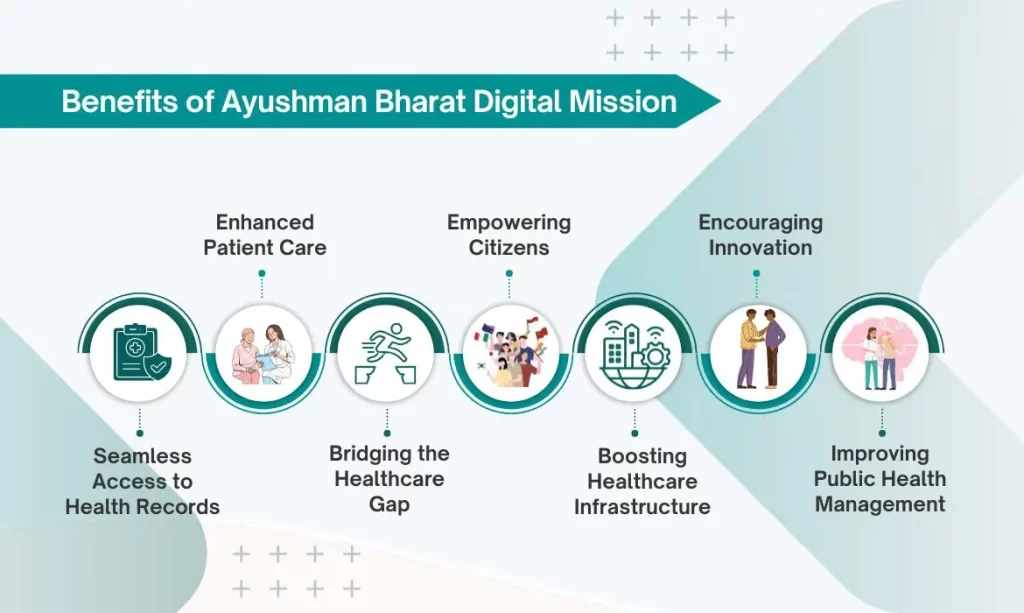
Seamless Access to Health Records
The ABDM facilitates the creation of a unique health ID for every citizen, known as the Ayushman Bharat Health Account (ABHA). This digital ID allows individuals to access and share their health records with ease, ensuring that their medical history is available anytime, anywhere.
Enhanced Patient Care
With the digitalization of health records, healthcare providers can offer more personalized and timely medical care. The availability of a patient’s medical history at the click of a button can significantly improve diagnosis and treatment outcomes.
As per a press release issued by Press Information Bureau (PIB), over 31 crore health accounts have been created under ayushman bharat digital mission (ABDM).
Bridging the Healthcare Gap
One of the most significant challenges in the Indian healthcare sector is the fragmentation of data across various healthcare providers. ABDM aims to bridge this gap by creating a unified platform where all health-related information is securely stored and shared, fostering better collaboration among healthcare professionals.
Empowering Citizens
The mission empowers citizens by giving them control over their health data. Patients can now consent to who gets access to their medical records, thereby ensuring privacy and security of their sensitive health information.
Boosting Healthcare Infrastructure
ABDM is not just about digitizing health records; it’s about creating a robust infrastructure that supports the digital health ecosystem. This includes registries for health facilities and healthcare professionals, which will enhance the overall quality of healthcare services.
Encouraging Innovation
By providing a standardized platform for health data, ABDM opens up new avenues for innovation in the health tech sector. Startups and established companies alike can develop new applications and services that integrate with the ABDM, driving forward the digital health revolution.
Improving Public Health Management
The digital mission provides the government with valuable data analytics tools to monitor and manage public health more effectively. This can lead to better policy-making and resource allocation, ultimately improving the health outcomes of the population.
Is it compulsory to opt-in Ayushman Bharat Digital Mission (ABDM)
Enrollment in the Ayushman Bharat Digital Mission is voluntary, but highly recommended. It offers a range of benefits to participants, including linking them to India’s ambitious Ayushman Bharat scheme.
Ayushman Bharat, the world’s largest healthcare program, provides health insurance coverage of up to ₹5 lakhs per family per year for secondary and tertiary care hospitalization. This initiative is a major step towards achieving Universal Health Coverage in India.
This digital mission leverages technology to improve healthcare delivery across the country. It encompasses several programs like electronic health records, telemedicine, health information exchange, and health analytics.
Conclusion
The Ayushman Bharat Digital Mission (ABDM) is the successor program to the National Digital Health Mission (NDHM) program. This voluntary program allows Indians to securely connect their medical data across different healthcare providers. With ABDM, you can create a digital health record that tracks your medical history. This benefits both patients and healthcare providers, enabling them to deliver the best possible patient care.
FAQs
Q1: Who is the CEO of ayushman Bharat mission?
Ans: Ms. Deepti Gaur Mukerjee is the current CEO of Ayushman Bharat Digital Mission (ABDM). Dr. Basant Garg is the Addl. Chief Executive Officer & Mission Director (ABDM) of this health care program.
Q2: What are the two major components of Ayushman Bharat?
Ans: Two main components of ABDM are ABHA ID and Health Facility Registry (HFR).
Q3: What is the main benefit of ayushman Bharat scheme?
Ans: ayushman bharat digital mission ensures seamless access to health records creating unique health ID of every patient. This health ID is known as ABHA.
What is the Construction Linked Payment Plan (CLP)?
India’s real estate sector has shown exceptional growth in the past decade and the major developments are yet to come. A report by India Brand Equity Foundation (IBEF) shows India’s real estate sector is expected to touch a US$1 trillion market size by 2030. It is expected to contribute 18–20% of India’s GDP at that time.
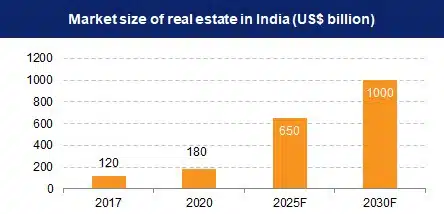
Effective policies and schemes, particularly the construction-linked payment plan, have fueled this exceptional growth.
Buying a property is a once-a-lifetime decision for many of us and it involves a big chunk of money upfront. To ease the burden, the construction linked payment plan offers a financing option for property purchases. The plan allows users to make payments in stages as construction of the property progresses.
What is Construction Linked Plan (CLP)
Construction linked plan is applicable only to under-construction properties. When a property-buyer purchases an under-construction property, he doesn’t have to pay the entire amount of flat cost to the developer upfront.
Usually, three parties are involved in the construction linked plan: the buyer, the builder and the financier. Here the financiers are banks and they disburse the money to the builders on behalf of the buyer.
The funds are released by the bank as per the actual construction progress of the project. The construction work is divided into multiple stages and a pre-decided amount is allocated for each stage. As the builder completes that stage, the bank releases the amount associated with that stage. However, in this construction linked plan, the first 2 or 3 instalments are time-based (within 6 months).
Pre-EMIs of the buyer are calculated based on the amount disbursed to the builder. We will understand this with an example given below.
Let’s assume the property value is 1 Crore. The buyer paid 10% of the amount as a down payment and the rest of the 90% amount is a home loan.
| Payment Particulars |
Amount (in %) |
Amount (In Rupee) |
Total Amount Paid |
|
Earnest Money |
3% |
3 Lac |
3 Lac |
| Booking amount (down payment) paid with 45 days from booking |
10% |
10 Lac |
13 Lac |
|
On Agreement or 90 days from date of booking |
20% |
20 Lac |
33 Lac |
| After completion of foundation/plinth |
10% |
10 Lac |
43 Lac |
|
After completion of 1st floor |
10% |
10 Lac |
53 Lac |
|
After completion of 5th floor |
10% |
10 Lac |
63 Lac |
|
After completion of 10th floor (final floor) |
10% |
10 Lac |
73 Lac |
|
After completion of flooring, furniture, lift, staircase, plaster |
10% |
10 Lac |
83 Lac |
| On possession | 17% |
17 Lac |
1 Crore |
Here's how it works:
- The property buyer pays earnest money and booking amounts that could range from 5% to 20%. (10% in the given example above).
- Rest of the money is financed by the bank as a home loan.
- Bank releases money to the builder as per the progress of the property.
- The buyer will pay pre-EMIs only for the amount released to the builder.
- Before possession, the bank pays the whole amount to the builder.
Construction Linked Payment Plan (CLP) Pros and Cons
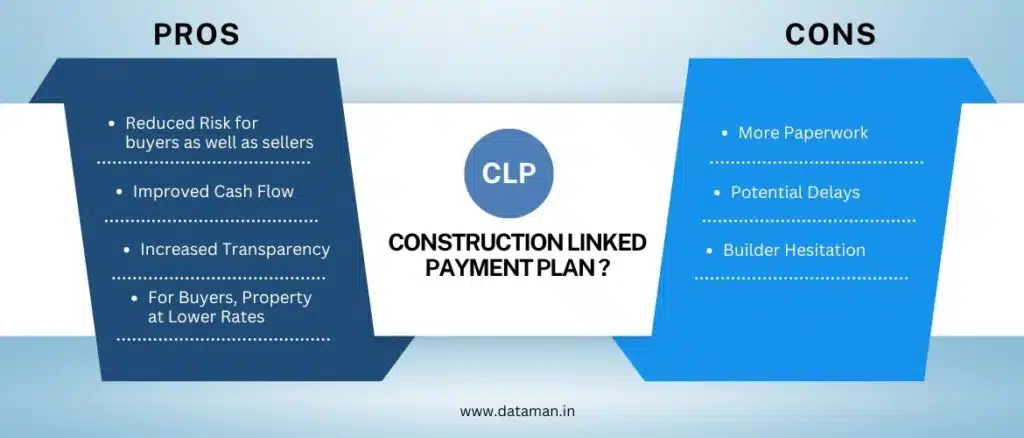
Every plan or policy has two sides, and CLP is no different. Let’s understand the good side and the not-so-good side.
Pros:
Reduced Risk for buyers as well as sellers
The construction linked payment plan protects the buyers because they only pay as the construction progresses. Banks pay on behalf of the buyers. When a bank is involved in the process, they thoroughly check all the documents, permissions, NOCs and others. If the project gets delayed or halted, there’s less risk of losing money.
On the other hand, builders get a steady flow of cash to keep the project moving.
Improved Cash Flow
The plan allows the builders to spread the cost of the whole project over a fixed-time. This helps them manage their own finances better and reduce the risk of financial crisis. Plus, a good track record of completing milestones on time helps builders build trust with banks for future projects.
Increased Transparency
Being a bank involved in the plan, there are clear milestones, both buyer and builder know exactly what to expect.
For Buyers, Property at Lower Rates
Builders start booking as they announce their new projects. At the initial stage, the rates of the property used to be low. The buyers can get benefit by booking the property at that time.
Cons:
More Paperwork
There will be agreements, milestone details, loan paperworks and other documents involved in the plan. This is where the role of a robust software comes in. An easy-to-use software solution eliminates the paperwork and optimizes the workflow.
Potential Delays
Delay in project means you’ll have to bear the rent of your current residence and pre-EMIs for a longer period. Additionally, any planned events may be disrupted or postponed.
Builders may withdraw up to 80-90% of the project funds according to the payment schedule, then delay completion citing various reasons.
Builder Hesitation
While builders often prefer a larger upfront payment, a CLP’s security and transparency could make them more willing to alternative payment structures.
Conclusion
It is imperative to consider your needs and different options available in the market before buying. Usually under construction properties are less expensive but buyer’s must wait a long time before possession.
Construction linked payment plan (CLP) benefits buyers, builders, and financiers—everyone involved in the plan. The plan ensures strong fund management. However, keeping track of the various stages and payments can be a real hassle.
This is where Real Builder steps in. Our construction management software helps you easily track progress, submit invoices, and get paid faster – all in one place.
Need more information? Contact us today.
Frequently Asked Questions
Q. What is the full form of CLP plan?
Ans. The full form of CLP plan is Construction Linked Payment Plan.
Q. Is a construction linked payment plan good?
Ans. a construction linked payment plan is beneficial for all parties involved i.e. buyer, developer and financier. It reduces the risk of buyers as financiers disburse the funds to developers on behalf of the buyers and the payment is done as per the progress. Complete payment is done only after the possession.
Q. What is the payment structure for under construction property?
Ans. The payment structure can vary from builder to builder. Most builders offer flexible payment options. Buyers typically make a down payment of 10% to 20% to secure the property. The remaining amount can be financed flexibly.
Choosing the Right Pathology Lab Software
Every lab thrives on efficiency.
Ever wondered what sets successful pathology labs apart?
It’s their excellent management using powerful tools like pathology lab software.
More than management, it’s precision and efficiency in lab operations. Whether you run a small pathology lab or a large diagnostic centre, having the right tools ensures accurate diagnoses, streamlined workflows, improved data management and enhanced patient care.
This blog post aims to be your guide, providing crucial insights and practical considerations to help you choose the perfect pathology lab software for your lab.
The Need for Pathology Lab Software in India
Traditional, paper-based lab processes are prone to errors and they have their own limitations. Pathology lab software is a fast, reliable, and secure tool. Furthermore, all the operations are transparent.
The Indian healthcare sector is experiencing significant growth, with a projected market value of USD 193.59 billion by 2032. This translates to a growing demand for efficient and accurate pathology services. Infact, The diagnostics market accounts for about 5% of India’s entire healthcare industry, estimated at ₹18,502 crore.
Pathology softwares are much needed for labs in-order to:
Improve Efficiency: Automating tasks like sample tracking, test ordering, and report generation frees up valuable time for lab personnel, allowing them to focus on higher-level tasks like analysis and interpretation.
Enhance Accuracy: Eliminating manual data entry reduces the risk of errors, leading to more reliable results.
Fast Turnaround Times: Pathology lab software facilitates a smooth workflow, ensuring reports are delivered to physicians and patients quicker.
Better Data Management: Software centralises patient data, making it easier to track trends, identify patterns, and improve overall lab performance.
Streamline Billing and Reimbursement: Many pathology lab software solutions integrate with billing systems, simplifying the process and ensuring timely reimbursements.
Now, while we have understood the need for the pathology lab software, let’s discuss the first step before choosing the right pathology software for your lab i.e. evaluating your requirements.
Understanding Your Needs
The very first step before you look for any software is evaluating your requirements which could be different from general requirements. This self-assessment will serve as a roadmap, guiding you towards right pathology software solutions. Here are some key points to consider while assessing your needs:
Lab Size and Testing Volume: How big is your lab, and how many tests do you process on average? Different software caters to various capacities.
Current Workflow and Bottlenecks: Identify your existing workflow and pain areas that cause delays or inefficiencies. Pathology lab software optimizes workflow and addresses these bottlenecks.
Future Growth Projections: If you are anticipating an increase in testing volume or expanding your services, choose pathology software that can scale with your growth.
Budgetary Constraints: Be realistic about your budget. These pathology software solutions cater to a range of price points.
Specific Needs: Do you require specific functionalities like digital pathology integration or AI-powered analysis tools? If yes, clearly communicate this with your vendor.
By answering these questions, you gain a clear understanding of your lab’s specific requirements. With this roadmap in hand, you can now explore the key features offered by pathology lab software solutions.
Key Features to Consider for Pathology Lab Software

After identifying your requirements, let’s discuss the key features which you should consider while searching pathology lab software.
Sample Management
Sample tracking with 100% accuracy and management is a crucial part of the pathology lab. A robust software solution integrates with your lab equipment, facilitates barcode scanning, and offers a chain of functionality to support seamless sample management.
Workflow Optimization
Efficiency in the lab can be achieved by optimizing workflow. In order to achieve operational efficiency, pathology lab software provides easy to use interfaces, customizable dashboards and automation tools to handle repetitive processes. Cherry on top, real-time status updates and notifications keep everyone informed.
Integrations
The software solutions should ensure seamless integration with your existing LIMS (Laboratory Information Management System) and EMR (Electronic Medical Records) for a holistic view of patient data, if any. Apart from that, the solution’s compatibility with digital pathology scanners, image analysis tools, and open API for future integrations, ensures adaptability of the solution.
Reporting Functionalities
Consider a pathology lab software system that is capable enough to generate customizable reports in various formats like tables or charts based on specific criteria. The software should integrate with reporting tools for centralized data visualization. This will help in informed decision making.
Security and Compliance with Indian Regulations
HL7 and DICOM compliance are non-negotiable. Look for robust user access controls with audit trails and disaster recovery/backup solutions to safeguard patient data. Ensure the software adheres to Indian regulations like the Indian Medical Council (MCI) standards and the Digital Information Security in Healthcare Act (DISHA) 2020.
Scalability
You should always consider choosing pathology lab software that can scale with the growth of your lab. Flexible licensing options and cloud-based solutions provide the scalability needed to accommodate future workload and complexities.
Vendor/Technical Support
Prioritize software solutions with a responsive technical support team that offers regular software updates, bug fixes, and provides training and implementation resources to ensure a smooth transition.
By carefully considering these key features and aligning them with your self-assessment, you’ll be well-equipped to choose the perfect lab software solution that empowers your team, optimizes workflows, and paves the way for efficient and accurate laboratory operations.
Choosing the Right Pathology Lab Software Vendor
Selecting the perfect pathology lab software is a crucial decision. It can streamline workflows, boost efficiency, and ultimately contribute to your lab’s success. But with so many vendors vying for your attention, how do you find the one that truly fits your needs? Here, we’ll explore strategies to help you evaluate potential vendors and make an informed choice.
Evaluating Potential Partners:
Request Demos: Don’t just rely on brochures! Request live demonstrations from shortlisted vendors. This allows you to see the software in action and ask questions about specific functionalities.
Seek Referrals: Talk to other labs! Get references from colleagues and industry contacts who have recently implemented pathology lab software. Their experiences can be invaluable.
Consider Implementation: Implementation timelines and costs are critical factors. Understand the vendor’s implementation process and associated expenses. Ensure the timeline aligns with your lab’s schedule and the cost fits your budget.
Aarogya: Your Perfect Choice for Pathology Lab Software
Having explored the key factors, let’s see how Aarogya, our advanced pathology lab software, addresses these considerations:
1. Tailored for Indian Labs
Aarogya has been designed with the Indian healthcare landscape in mind. We understand the unique challenges faced by Indian pathology labs, doctors, and healthcare workers. Our software caters to your specific needs, ensuring seamless integration into your existing processes.
2. User-Friendly Interface
Aarogya boasts an intuitive interface that even a novice can navigate effortlessly. Say goodbye to frustrating learning curves and hello to efficient operations.
3. Data Security and Privacy
Aarogya prioritizes data security, adhering to industry standards and regulations. Rest assured that your patients’ sensitive information is safe within our robust system.
4. Efficient Workflow Management
From sample collection to report generation, Aarogya streamlines every step. Track samples, manage inventory, and automate repetitive tasks. Spend less time on paperwork and more time caring for patients.
5. Insights That Matter
Our software isn’t just about data entry. Aarogya provides actionable insights. Monitor trends, identify bottlenecks, and make informed decisions. Data-driven decisions lead to better outcomes.
6. Compliance
Aarogya is built with Indian regulations in mind, ensuring adherence to HL7, DICOM, MCI standards and DISHA 2020.
7. Scalability
Our modular design allows you to scale up or down based on your lab’s needs, adding features and functionalities as your lab grows.
8. Integration Capabilities
Aarogya seamlessly integrates with most popular lab equipment and HIS solutions in India. This eliminates data silos and ensures a smooth flow of information.
9. Technical Support
Our dedicated support team is readily available to answer your questions and resolve any issues you may encounter. Clients can get support through mail, chatbot, 1:1 call, video call or they can call our engineer for on-site visit. We ensure prompt and localize support to all our clients in a time effective manner.
Conclusion
Choosing the right pathology lab software is an investment in the future of your pathology lab. The right software can Improve Workflow, Enhance Accuracy, and Boost Productivity. For a deeper dive, consider exploring industry reports and user forums. These resources can provide valuable insights and perspectives on popular pathology lab software solutions.
If you have questions or need further guidance on selecting the right pathology lab software vendor? Contact us today, and let’s discuss your specific needs.
What is a Radiology Information System (RIS)
India’s growing population and a shift towards a less active, processed food-heavy lifestyle have significantly increased the number of patients suffering from chronic diseases. This, in turn, is driving demand for diagnostic imaging services and radiology information systems (RIS).
Need for the improved data management, workflow optimization, operational excellence and remote access to patient information are the major factors increasing the adoption of radiology information systems in India.
Infact, the global radiology information system market is growing with a compound annual growth rate (CAGR) of 7% from 2021 to 2030. In 2020, the global market size of RIS was $1051.60 Million and is projected to reach $2141.50 Million by 2030.
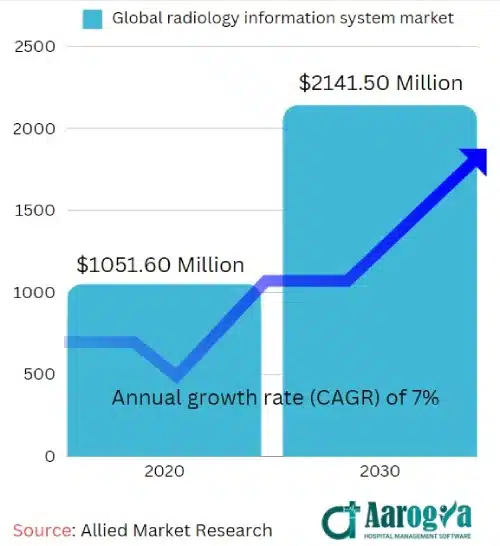
The shortage of qualified radiologists in India is fueling the demand for radiology information systems for advanced RIS features like workflow optimization and remote monitoring.
Why a Management System is Necessary in Radiology Practices
Radiology labs tend to have a higher patient load which slows down the workflow and there are very high chances of error and inefficiencies related to productivity. The RIS software solution eliminates the manual process and paper based documentation of patients, staff and activities. Since the values and parameters recorded by machines are very crucial and even slightest of variations can alter the results, consequences and implications of reports. It is recommended to use a human error prone method.
The system ensures healthcare professionals easily access the right data at the right time with fewer (almost zero) medical errors and transcription mistakes in records.
What is Radiology Information System
A radiology information system, also known as RIS, is a software solution that has been designed to store, manage, share data and medical imagery of patients in radiology departments and diagnostic centres. RIS are very much similar to Electronic Health Records (EHR) softwares.
Radiology Information System integrates with Picture Archiving and Communication System (PACS) and Hospital Information Management System (HIMS) seamlessly. Generally, RIS sends transcribed results and PACS transfers images to your referring doctors & hospitals.
RIS software simplifies clinical workflow including:
- Appointment scheduling,
- Patient registration,
- Test/order tracking,
- Billing,
- Test report entry,
- Labels,
- Reporting and more.
The system is efficient in providing consultant-wise, department-wise reports to the administrator.
RIS enables radiologists, doctors, administrators, and healthcare professionals to communicate to each-other in a fast and efficient way, leading to better patient care.
What are the Functions of Radiology Information System
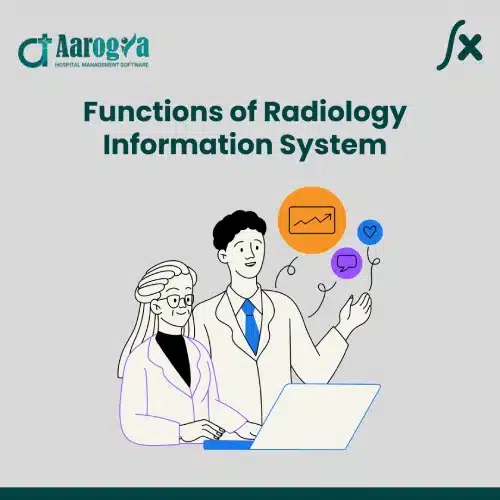
RIS vendors provide software solutions as per the need and requirements of the client. However, the basic functions of RIS are almost same which are as follow:
Patient appointments/scheduling: The RIS software provides an interface to make appointments and schedule patients for their tests in radiology labs. The process is for both Inpatients and Outpatients.
Patient Registration & Management: The system eliminates the paper-based process in the lab, reducing the chances of errors. Also, the radiologist and doctors can access the patient information and their medical history. They can add images and test reports in the system for any patient.
Tests Tracking: When a patient requests for any diagnostic image test, the lab assigns a tracking number to the test. The system stores the diagnostic tests data for every order. The patient can keep track of tests and reports at any given point.
Billing: Radiology Information System Software generates electronic invoices for every patient’s imaging tests. The system supports TPA and other automated claims following regulations and guidelines.
Reporting: The system has the capabilities to generate consultant-wise, department-wise reports of the patients. The system covers different types of reports like Radiology Advance Slip Printing, X-Ray report, Ultrasound report, CT Scan Report, Radiology Test Report Printing, worksheet printing, report output to PDF, test report on website, X-ray Film Stocks etc.
Resource Management: RIS tracks the exact amount of supplies and inventory in the lab. So, the professionals have a clear idea about available supplies in the lab and how much supplies are needed in future. They can plan their budget and reduce costs.
HIPAA Compliance: Data security is a big concern especially when you have sensitive data of thousands of patients. A robust RIS should have proper security features and functionalities such as automatic backup, data encryption, 2-factor-authentication etc. Basically, HIPAA compliance is related to data safety and security and the radiology information system must follow all HIPAA regulations.
Role of RIS in HMIS
Hospital Management Information System (HMIS) is a complete hospital management software solution having modules for every clinical workflow like EMR, EHR, pharmacy, IPD, OPD, blood bank, radiology and more. Healthcare professionals use the system to manage patient data and optimize clinical workflow.
On the other side, radiology management softwares has been designed to optimize the workflow of standalone and hospital radiologies.
By integrating RIS in HMIS, the healthcare professionals and doctors can share, manage and track patient’s diagnostic imagery data within and across the departments of the hospital, where required. This makes the RIS an integral part of the HMIS software solution.
Benefits of Radiology Information Software
Automated Patient Workflow
An RIS system eliminates the redundant processes and the need for paper based documentation. The communication between staff members have been increased because all of them are using one centralized system.
Improved Patient Care
Patients are more satisfied and well treated as the system eases the patient workflow with transparency.
Reduction in Errors
With the right RIS system, you can accomplish more precise analysis. As the paper based work is eliminated, the chances of error are very low (almost zero).
Maximizing Revenue
With the RIS system various reports are generated in an easy and quick way. This translates to quicker billing and faster reimbursements from insurance providers. It tracks outstanding invoices and follows up on overdue payments. Furthermore, the system minimizes the number of missed appointments.
Increased productivity
The team at your lab is not involved in the manual and paper–based work. All the repetitive work is automatic so the team members can focus on their work.
Integrations
To start radiology practice, radiologists have to rely on three systems– RIS, PACS and EHR/HMIS software solutions. RIS are responsible for sending test results and reports. In the same way, PACS are responsible for sending diagnostic images. Furthermore, EHR or HMIS are generally to manage patient data and processes within and across the departments.
Radiology Information Systems (RIS) are an essential part of hospital management information systems. To exchange information and perform interoperability, the system must follow industry-specific standards which are as follow:
- Health Level 7 (HL7)
HL7 standards are used to transfer clinical and administrative data between different departments of the healthcare system.
- Digital Imaging and Communication in Medicine (DICOM)
DICOM standards are used for image processing and management.
- Enterprise Master Patient Index (EMPI)
EMPI is a patient database that is used to store and share accurate patient information to healthcare professionals.
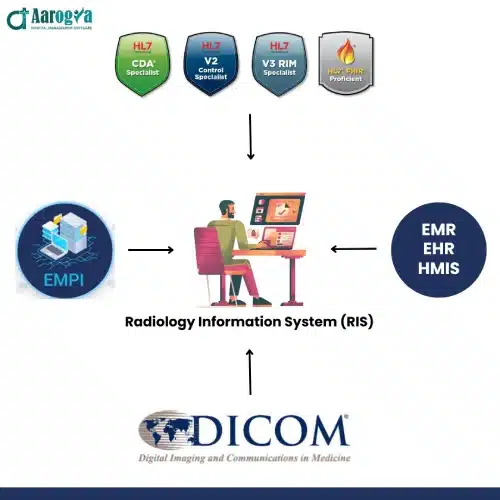
Choosing a Right RIS Software Solution
Every system has its own merits and demerits. You have to identify all key functionalities and integrations you want, then look for the available RIS software solution provider in the market.
Make sure the RIS solution can be integrated with other healthcare tools seamlessly. On top of that, the solution is customizable and scalable to your specific needs. If your needs will change in future, will it be able to align with those needs?
Apart from software’s capability, vendor support and customer services are also very crucial at any stage. Prefer vendors providing exceptional support and customer services. Cost of the solution and return on investment (ROI) are other important points to consider while selecting the right RIS software solution.
Why Choose Aarogya Radiology Software Solution
We, at Aarogya, understand the specific needs of Indian radiology practices. The interface of the solution is simple and easy to use. Our solution is:
- User-friendly
- HL7, DICOM and HIPAA compliant
- Highly Secured
- Fully Customizable
- Affordable
- Reliable
Aarogya is backed by exceptional support and customer services. The solution can be integrated easily with HMIS, PCAS, and other systems.
Conclusion
Radiology Information Systems (RIS) are like the brains behind the operations of radiology labs and departments. These systems handle everything from appointment booking to tests tracking and delivering results. They save time, improve accuracy and ensure better patient outcomes.
Contact us to get a free demo.
What is a Queue Management System and Why Do You Need One?
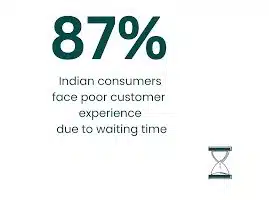
This is where a Queue Management System (QMS) comes in.
What is Queue Management System
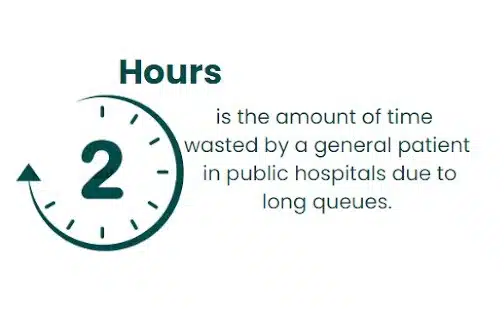
Such conditions not only frustrate patients but also require extra efforts from medical staff, reducing their productivity. Alright, so what exactly is a queue management system?
At its core, Queue management system (QMS) is a powerful software solution designed to manage and reduce waiting times in various service areas. The system is a game-changer for the hospitals, banks and government offices that typically see large influxes of customers during working hours.
By implementing an efficient QMS, businesses can organize and optimize their customer flow, providing a seamless experience from the moment customers walk in until they leave.
In simple words, the system is like a digital conductor for your waiting room. Where customers register themselves upon arrival. Then, the system assigns a ticket number and provides an estimated wait time based on the current queue. They receive an sms-alert before their turn for service.
In India, the adoption of QMS is on the rise. With a compound annual growth rate (CAGR) of 5.5%, India stands as the third-largest revenue generator for QMS in the Asia-Pacific region.
How does a queue management system works
- Customer Arrival: A customer arrives at the service location e.g. hospitals, or banks.
- Registration: The customer gets a token or number using a ticket dispenser, kiosk, or mobile app.
- Queue Management: Each customer has a unique token number and the system assigns a queue position and displays the estimated wait time. It may also collect customer information for service prioritization.
- Service Call: When a service agent becomes available, the system alerts the next customer in line, either through a display screen, audio call, or a mobile app notification.
- Service Delivery: The customer receives service from the designated agent.
- Feedback and Data Collection: The system may offer the option for customers to provide feedback on their experience in general with the services offered at Hospital/Bank/Restaurant.
Types of Queue Management Systems
There are different types of QMS available, suited to specific needs and business environments. Here’s a breakdown of some common options:
|
Sr. |
Queue Type |
Description |
Ideal For |
|
1. |
First-come, first-served |
Classic queue system |
General check-ups |
|
2. |
Priority Queuing |
Urgent cases |
Patients requiring immediate attention |
|
3. |
Appointment Queuing |
Scheduled consultations |
Planned appointments |
Priority Queuing
In some cases, the customer requires immediate services irrespective of their arrival time. The best example of this can be seen in hospitals where a patient with a critical condition is in the priority queue.
Unlike a standard queue where patients are served in the order of arrival, a priority based queue management system ensures patients with higher priority are attended before lower priority or normal ones.
In priority queuing, each customer in the queue is assigned a priority level which can be decided based on different factors like urgency, potential impact or predefined service level agreements (SLAs).
The system identifies the priority level and prioritizes the patients.
Aarogya’s Approach to Manage General and Priority Queuing
Aarogya is a comprehensive hospital management software system having a special module for queue management. The system has been designed to handle two types of queues: Regular/General queue and priority queue.
In the regular queue the system functions like FIFO (First-In-First-Out) queue. The patients are prioritize on the basis of their arrival time.
On the other hand, in priority queue, the system assigns priority level to each customer. Based on the condition and situation of the customer they are divided into four priority levels i.e. emergency, high, normal, low. Patients go for consultation as per their priority level.
Aarogya defines a clear priority classification system where it is clearly defined what constitutes an emergency, high priority, normal and low priority in the healthcare context.
System has some predefined rules based on symptoms or vitals of the patient. Apart from that, a nurse evaluates the patient’s condition and assigns their priority.
What’sApp and SMS integration feature in Aarogya System helps patients to know the queue system and priority levels. For better cooperation, hospitals can also use display systems or announcements.
Methods to manage the queues in any organization
- Ticket Dispensing Systems: These traditional systems dispense physical tickets with a queue number. They are simple to use and reliable, but can feel impersonal.
- Kiosk-based Systems: Customers interact with a self-service kiosk to join the queue, select service types, and access additional information. This option offers more flexibility and can handle multiple queues simultaneously.
- Virtual Queuing Systems: Customers join the queue remotely using a mobile app. This eliminates the need for physical presence until their service time approaches. It’s ideal for scenarios where wait times are unpredictable or customers prefer waiting remotely.
- Web-based Queuing Systems: Similar to virtual queuing, customers join the queue through a web interface on their computers or smartphones. This is a convenient option for situations where mobile app installation is not preferred.
Appointment Scheduling Systems: While not strictly a queue management system, appointment scheduling integrates with QMS to manage pre-booked appointments alongside walk-in queues.
But why should you consider a queue management system for your hospital or business? Here are some benefits.
Benefits of Implementing a Queue Management System
Improved Customer Experience: Reduced wait times, real-time updates, and a more organized process lead to a more positive customer experience.
Increased Customer Satisfaction: Happier customers are more likely to return and recommend the business.
Enhanced Staff Efficiency: Streamlined workflows and reduced congestion allow staff to focus on delivering excellent service.
Data-Driven Decisions: QMS data helps identify areas for improvement, optimize staffing levels, and make informed decisions about service processes.
Reduced Operating Costs: Improved efficiency can lead to cost savings in areas like staffing and service delivery.
Increased Revenue: Satisfied customers are more likely to spend more, and reduced wait times can lead to increased customer throughput.
Improved Brand Image: A well-managed queue reflects a professional and customer-centric organization.
The Integration
Queue management systems are generally small software solutions for specific work. The system can be integrated with existing softwares like Hospital management software, EMR/EHR software, Radiology Software and more. It is recommended to have an integrated system with existing solutions as it has several enormous benefits for both patient and healthcare providers.
Aarogya’s Role and Importance
Clinic Management System: A Quick Guide For Busy Doctors
People primarily rely on clinics for any medical consultation or first-aid. Hundreds of patients flow into any clinic every day, making efficient management crucial. Additionally, running a clinic is more than just providing excellent patient care. It involves scheduling appointments, managing finances, ensuring regulatory compliance, and keeping your staff organized – all while delivering a seamless experience for your patients.
We all have seen rapid technological advancements in the Indian healthcare sector, especially in the last decade. So, opting technology is no longer optional; it’s essential for survival and success. This is where a Clinic Management System (CMS) comes in, acting as your digital backbone and streamlining every aspect of your practice.
As we said earlier, for modern healthcare providers, a CMS is no longer a luxury; it’s a necessity. In fact, 10% – 15% of clinics have adopted some form of clinic management system, and the CMS market is projected to reach a staggering $230.6 million by 2027.
Initiatives like the Ayushman Bharat Digital Mission (ABDM) encourage digitization in healthcare, potentially driving CMS adoption further.
What exactly is a Clinic Management System?
A Clinic Management System is essential software designed to streamline and optimize clinic operations and enhance healthcare delivery. Beyond patient care, clinic operations and administration involve maintaining the clinic premises, staffing records, and overseeing various departments (such as laboratory, pharmacy, and housekeeping). Additionally, clinics manage inventories, coordinate with diagnostic labs, and collaborate with medical equipment vendors.
The dynamic nature of clinics involves repetitive tasks, data generation, record-keeping, and adherence to regulatory policies. A Software-as-a-Service (SaaS) clinic management system seamlessly integrates these functions, enhancing efficiency for both patients and Staff.
The typical workflow in a clinic encompasses several steps:
Appointment Scheduling and Management: Patients schedule bookings with an online scheduler accessible to them 24/7. Practitioner manages appointments, calendars and sets reminders to reduce missed appointments and streamlines waiting room management.
Electronic Health Records (EHR): EMR and EHR software are main features of clinic management systems. EHR provides secure storage and access to patient medical records, including medications, allergies, and lab results.
Medical Consultation: The doctor meets with the patient, provides medical advice, and recommends necessary diagnostic tests or medications.
Billing and claims: Automate insurance claim submissions, generate invoices, and track payments electronically. This reduces administrative burden and improves cash flow.
Access to Clinic Services: Patients can access the clinic’s laboratory and pharmacy as needed. The clinics can facilitate tele-calling and tele-medicine to their patients with the help of the solution.
Reporting and analytics: Gain valuable insights into clinic performance metrics like appointment volume, staff productivity, and financial trends. Data-driven insights help you make informed decisions for improving efficiency and profitability.
Communication tools: Stay connected with patients through secure messaging, appointment reminders, and telehealth options. Streamlined communication fosters patient engagement and satisfaction.
Security & Compliance: Features to ensure patient data privacy and HIPAA compliance.
Why Do You Need a Clinic Management System?
Improved Patient Experience: Did you know that 72% of patients do not visit clinics after booking their appointments due to scheduling difficulties? A CMS eliminates this frustration with online appointment booking, automated reminders, and telehealth options. Additionally, secure patient portals allow for easy communication and access to medical records, fostering trust and engagement.
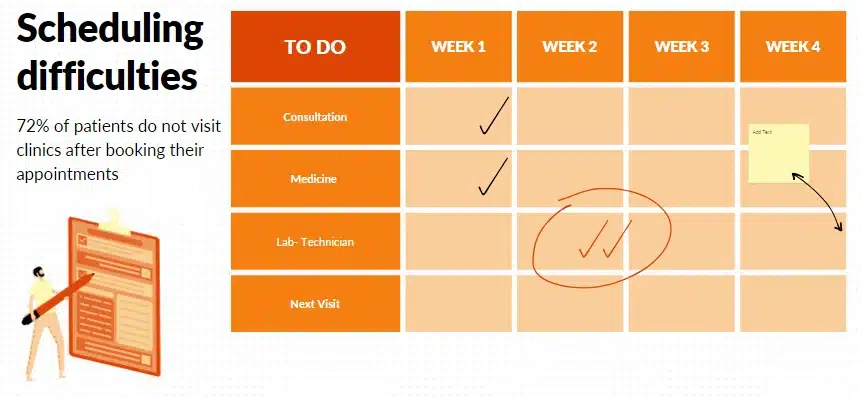
Convenient online scheduling, easy access to records, and efficient communication contribute to a 92% increase in patient satisfaction, according to Software Advice.
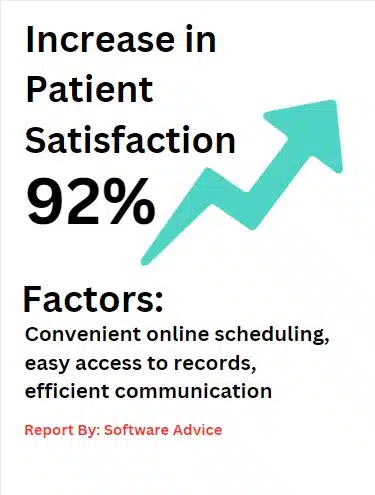
Enhanced Operational Efficiency: Gone are the days of paper charts and manual tasks. A CMS can automate appointment scheduling, billing, and claims management, freeing up your staff to focus on what matters most – patient care. Streamlined workflows and real-time reporting empower you to make informed decisions and optimize resource allocation.
Studies show that CMS can reduce administrative tasks by up to 40%, freeing up valuable time for patient care.
Financial Optimization: A CMS helps you stay on top of your finances with automated billing, claims submission, and payment processing. You can track revenue and expenses in real-time, identify areas for improvement, and ensure accurate and timely payments.
According to the Medscape Physician Compensation Report for 2023, physicians spend an average of 15.5 hours per week on paperwork and administration. Studies also show that CMS adoption can lead to a 20% reduction in administrative costs.
Regulatory Compliance: Navigating the ever-changing healthcare regulations can be overwhelming. A CMS simplifies compliance with built-in features for data security, privacy protection, and reporting requirements. This peace of mind allows you to focus on running your practice without fear of penalties or violations.
Reduced Costs: Did you know that administrative inefficiencies cost healthcare providers $360 billion annually? A CMS helps control costs by reducing paperwork, optimizing inventory management, and improving billing accuracy.
Data-Driven Insights: Clinics can measure how many patients are coming and from which place. Patient’s information is stored in the system, so clinic’s can provide an area estimate for any service. To identify new and returning patients, the system tracks patient history. Appointment data shows how many new patients are booking compared to returning ones.
Clinics can track which doctors have the most appointments booked and they can conduct surveys to see which doctors patients prefer. This data-driven approach empowers you to make informed decisions about resource allocation, marketing strategies, and overall clinic growth.
Industry statistics further highlight the need for CMS adoption:
- 73% of healthcare providers believe investing in technology helps them deliver better patient care.
- Patients are willing to pay 10-20% more for services from a clinic with a user-friendly patient portal.
Choosing the Right Clinic Management System: Key Considerations
With numerous CMS options available, selecting the right one is crucial. Here are some key factors to consider:
Ease of use: The first and very important feature of the clinic management system is its user experience. The software should be intuitive and user-friendly for both staff and patients to navigate.
Your clinic’s size and needs: The CMS available in the market are different to cater varying practice sizes and specialities. You have to choose a solution that aligns with your specific requirements.
Scalability: Ensure the system can accommodate your future growth needs and easily integrate new features as your practice evolves.
Integration capabilities: Check if the system integrates with existing software you use (e.g., accounting, lab services) for seamless data exchange.
Vendor support: Reliable and responsive customer support is vital for troubleshooting and ongoing assistance.
Take the Leap
The benefits of implementing a clinic management system are undeniable. By empowering your practice with an efficient, integrated platform, you can focus on what truly matters that is delivering exceptional patient care.
Want to make your clinic run smoother and reach new heights? Our clinic management system can help! See it in action with a quick demo and learn how it benefits your practice. Let’s chat!
EMR/EHR Software Explained: A Beginner’s Guide
Rapid technological growth has changed the way we deliver and receive healthcare services. Some of the most crucial advancements in healthcare technology include Electronic Medical Records (EMR) and Electronic Health Records (EHR) softwares.
Modern day hospitals have adopted EMR and EHR softwares for the purpose of managing patient medical records and automating clinical workflow. The government has also taken initiatives under the National Digital Health Mission (NDHM) program to create a unified digital health ecosystem in India, including nationwide EHR implementation.
As per a report by insights10, India’s EHR market size was valued at $514 Mn in 2022 and is estimated to expand at a compound annual growth rate (CAGR) of 7% from 2022 to 2030 and will reach $884 Mn in 2030.

This report estimates that the total number of hospitals using EMR/EHR software in India was around 15-20% in 2022. This translates to roughly 12,000-16,000 hospitals out of the estimated 80,000-90,000 hospitals in the country.
So, EMR and EHR softwares are becoming increasingly popular among medical practitioners and healthcare professionals as these software systems optimise the workflow of hospitals/clinics and enhance the patient outcomes.
The question which may be striking right now is “what is EMR/EHR” and why healthcare institutions are interested in adopting this software solution. We will also discuss the challenges/barriers in the implementation of EHR softwares.
A robust EHR/EMR software is a fast, efficient, and paperless system to record & monitor patient medical history, prioritise tasks, schedule appointments, send alerts to patients and much more. The system has a dedicated physician dashboard through which medical practitioners can ePrescribe and consult patients, get daily MIS reports to know where you stand, streamline lab procedures and more.
EMR Vs EHR | Difference Between EHR and EMR
Looking similar, EMR (Electronic Medical Records) and EHR (Electronic Health Records) have different meanings. Often, EMR and EHR are used interchangeably but a thin line separates both.
A key difference between EMR and EHR is that EMR’s objective is to take care of a patient’s medical conditions while EHR is a more comprehensive view into the patients health and history. EHR also includes the reports and data from other electronic health systems. Telemedicine, billing, electronic faxing, lab results and other features are supported by EHR software.
Features and Capabilities of EMR/EHR Software
Seamless Integration with Practice Management
EMR and EHR software integrates with physician’s practice management seamlessly. Appointment schedules, patient information, charges, etc. automatically populates in the EMR/EHR system and vice-versa.
Electronic Prescribing
EMR provides the facility to doctors to e-prescribe patients. At the time of e-prescribing patients, doctors can see medication history of the patients. The prescriptions are sent to the patient through What’sApp and SMS. Now, patients have prescriptions, reports and medication history on the go, while they are visiting a drug store, clinic, hospital or laboratory.
A 2021 study by the National Digital Health Mission found that only 15% of healthcare providers were using e-prescribing solutions.
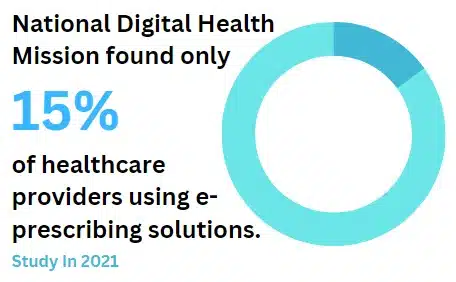
Online Consultation
EMR facilitates a portal for online consultation. The patients who are not willing to go to hospitals or having minor problems can avail online consultation facilities. This could be best for the patients who have visited the hospital physically but have some queries.
As per a report published in McKinsey & Company, In India, 50 million Indians accessed healthcare online from March to May 2020, with 80 percent of all telemedicine users and patients using it for the first time.
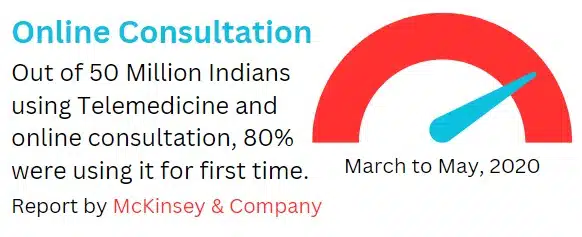
Timely Reminder and Alerts
EMR and EHR software systems provide hospitals facilities to send reminders/alerts to patients for their appointments, follow-ups, next meetings, test reports and other. Even, the alerts could be for the unavailability of the doctor on any particular day.
Customizable Templates
Templates are predefined structures of prescription for any specific condition. These templates are created by actual doctors to optimise the clinical workflow. These templates are customizable and can be accessed through Electronic Health Records (EHR) software by the doctors.
Electronic Fax
Electronic Fax in EHR and EMR software refers to the elimination of and paper documents. The system allows healthcare providers to send and receive patient information electronically. The feature improves efficiency, security and collaboration while reducing the cost and time.
Multi-Speciality Support
The electronic medical record (EMR) and electronic health record (EHR) are equally useful for general physicians, dentists, gynaecologists, neurologists and other specialties. The system can be implemented for one or many specialists and manage operations as a single business.
Telemedicine
Telemedicine is a boon for the patients who are in rural areas, developed chronic conditions, or due to any other reason they are not able to come to a healthcare facility. Through telemedicine, doctors can attend more patients in less time. Furthermore, this feature of EHR decreases the costs for patients and physicians both.
Easy Appointment Tracking
Appointment tracking is an essential feature for hospitals and clinics so that they can plan their day properly. Furthermore, they can send them reminders for pending follow ups and next meetings.
As per a 2022 draft Version 2 of National Digital Health Mission, 40% of patients in India miss appointments due to various reasons, leading to loss in revenue and patient dissatisfaction.
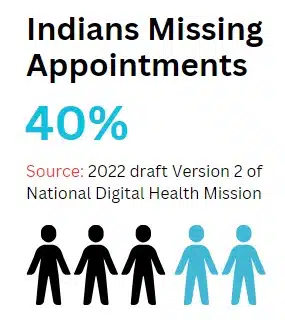
Physician Dashboard
The EHR/EMR system provides a dedicated dashboard to the physician where they can check their schedules, appointments, MIS reports, patient reports, and much more in real time.
MIS Reports
EHR and EMR software generates multiple MIS reports on a daily, weekly and monthly basis. Healthcare institutes can analyse these reports to understand where they stand now and what measures they should take in order to stay ahead.
Clinical Decision Support
Integrated with EHR software, the Clinical Decision Support feature helps healthcare providers make informed and evidence-based clinical decisions for the patients to achieve better clinical outcomes, optimize treatment plans and ensure adherence to best practices.
Benefits of EMR and EHR system for Hospitals
Benefits of EMR and EHR system for Patients
Challenges/Barriers in Adopting EMR and EHR Software
Implementing EMR and EHR software systems bring considerable benefits to the healthcare facility, but it has its own challenges or barriers. Here are some key challenges/barriers in adopting EHR and EMR software:
High Upfront Cost: The cost to set-up server and purchase hardware is high. On top of that, the EHR and EMR software purchase cost is also very high. To put aside this problem for the short term, hospitals can opt Open-Source Softwares.
An article published in Deloitte shows that 84% of Indian healthcare leaders and professionals have plans to increase their budgets on digital solutions and technology initiatives in 2023.
Maintenance Cost: Apart from purchasing software, technical support, hardware and server maintenance cost is ongoing cost. To reduce some of the cost and headache, web based software or cloud EMR and EHR softwares will be good choices.
Data Security Concerns: Low quality or open-source EHR and EMR software generally have data security concerns. Data of patients, physicians, and healthcare institutions is precious and security of the data should be on top of the list of software providers.
Skilled Staff Required: To operate software, hospitals should have skilled staff. The vendors provide training and documentation of the software but staff should be skilled enough to grasp that knowledge.
Interoperability Issues: The EHR pulls the information of the patient available at different portals, so the EHR software should be flawless for any device and portal.
Regulatory requirements: EHR or EMR software should comply with government rules and regulations. These regulations depend on several factors like location, type of organization, purpose of the software, etc. For example: A hospital in the US should comply with HIPAA, in Europe with GDPR and in Canada with PHIPA.
Selecting the Best EMR and EHR Software System
There are many EHR and EMR software in the market and generally these software are customizable as per the client’s needs and requirements. So, instead of looking for the best EMR and EHR software in the market, you should look for the EMR and EHR software that fits best to your healthcare institutions.
Simply put, selecting EMR/EHR requires careful planning, investment, ongoing maintenance and vendor support. By understanding your own needs, requirements, budget and areas to improve, you can identify easily which EMR/EHR software is best for you. With such a system you can reap the benefits of improved patient care, efficiency, and data-driven decision-making.
Why Adopt Aarogya’s EHR (Electronic Health Record) Software System
At Aarogya, we understand the challenges faced by healthcare providers in today’s digital age. Managing patient records, ensuring accurate billing, and delivering efficient care can be overwhelming. That’s why we’ve developed a comprehensive EHR software system designed specifically to address your needs in a cost and time effective manner. It is a secure software system with user-friendly interface and easy documentation facility. Our team provides 24/7 technical support, in case any problem occurs.
Aarogya’s EHR is more than just software; it’s a partnership for success. We are committed to helping you deliver exceptional patient care, improve practice efficiency, and achieve your financial goals.
Cost and Pricing of EMR and EHR
The cost of an EHR/EMR software is decided on the basis of your requirements and number of users. The software can be used by small clinics, mid-size hospitals, large hospitals, hospital chains and healthcare institutes. Furthermore, the pricing varies vendor to vendor.
Apart from the software cost, hospitals have to invest in hardware of the system i.e. CPU, monitor, local severe etc.
Conclusion
In summary, having EMR/EHR software is the need of the hour for the hospitals. These software solutions offer many benefits to both patients and providers. Choosing the right EHR/EMR software system is crucial to optimize your practice workflow and enhance the patient outcome.
Interested in EHR/EMR software systems? Explore the resources available on our website or contact us directly – Get a Free Demo Today.
How Radiology Information System Elevates Healthcare
Radiology information system is at the centre of modern healthcare as it provides a critical link between patient care and technological advancements in medical imaging. It is a specialized software solution designed for the busy and sometimes messy environment of hospital radiology departments. The primary objective of the Radiology Information system is to efficiently manage the vast amounts of imagery data generated daily in the lab.
Why Radiology Management Matters
A RIS system is not just a way to store your digital files, it’s a powerful tool that helps you manage your patient records, orders and billing with ease. By implementing this system, radiology departments can overcome the challenges of manual work and embrace a streamlined digital approach. This means you can save time on administrative tasks and spend more time on what matters the most– diagnosing and treating patients.
So, the question is: what exactly does this automation software (RIS) do?
1. Patient Records & Orders
Suppose a doctor orders an X-ray for Mr. Ashish. With an RIS, that order gets digitized, passing through the system within seconds. After which, Mr. Ashish’s record, complete with past scans and medical history, pops up on a screen, ready for the technician to review. Here, he need not be scrambling through paper files or communicating with doctors. All required information is there, neat and clean, saving time and reducing errors.
2. Efficiency in Billing
A proper and smooth billing process is imperative for any radiology laboratory. The Radiology Information System makes billing a piece of cake. The system keeps track of every process from scans to procedures so that you get accurate invoices, faster payments, and satisfied accountants (and maybe even satisfied patients, who can understand their bills without a PhD).
3. Image Archive
The Radiology information system RIS turns Ultrasounds, CT Scans, MRIs, X-Rays etc. into a neatly organized digital library. Scans are stored securely, easily accessible to authorized personnel, and these scans can even be shared with other hospitals electronically. So, the fear of missing a file or losing images can be alleviated.
4. Streamlining Every Step
It’s not just storage and billing, the software makes the entire radiology workflow smooth and flawless. The system schedules appointments, tracks test progress, and even sends reminders to patients and doctors for respective work. It’s like having a personal assistant for every aspect of the department, ensuring smooth operations and happy staff.
5. Patient Referral Management
Patients are generally referred by doctors for check-ups and laboratories have to enter and track the doctor’s referral for each patient. RIS systems provide a secure interface to manage referrals efficiently.
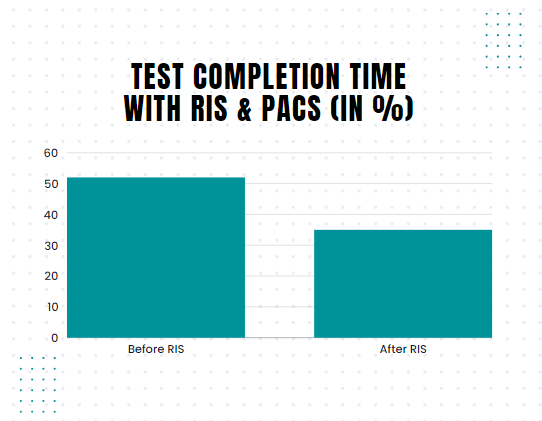
Studies show that’s exactly what hospitals achieve with Radiological Information Systems (RIS) and Picture Archiving and Communication Systems (PACS), slashing test completion times by a whopping 52% to 35%.
Integration and Workflow Optimization
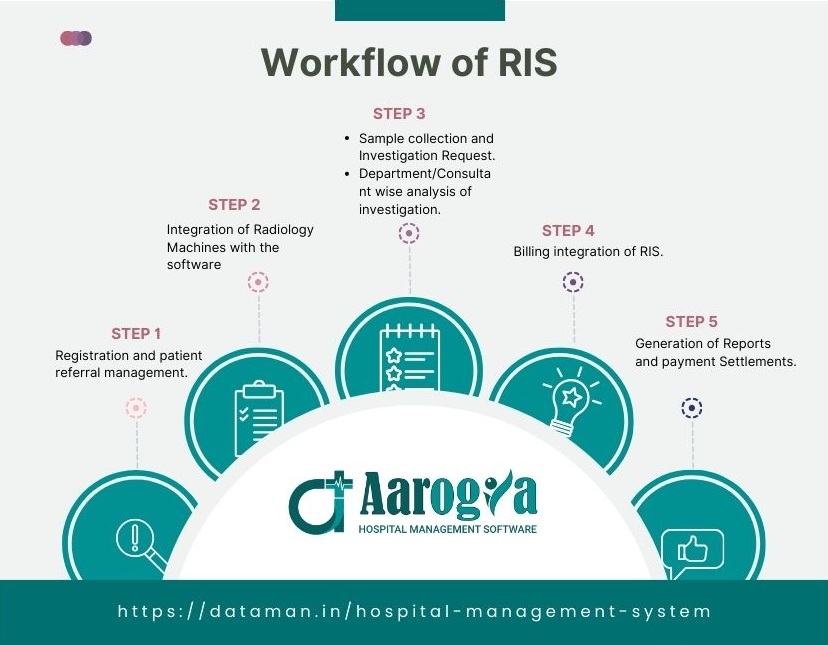
One of the standout features of the RIS is its ability to integrate seamlessly with other software systems, including those managing image archives. This integration ensures that all patient information and imagery are accessible in one place, eliminating the need to switch between multiple platforms. As a result, the workflow is smoother, and the process of retrieving and reviewing images becomes faster and more efficient.
Step-by-Step Workflow of Radiology Information System
Step 1 : Registration and patient referral management.
Step 2 : Integration of Radiology Machines with the software
Step 3 : Sample collection and Investigation Request. Department/Consultant wise analysis of investigation.
Step 4 : Billing integration of RIS.
Step 5 : Generation of Reports and payment Settlements.
The Benefits of Radiology Information Software
- Enhanced Diagnostic Capabilities: With all relevant data at their fingertips, radiologists can make more informed decisions, leading to better patient outcomes.
- Improved Patient Experience: Quicker turnaround times for imaging results means patients receive their diagnoses and treatment plans sooner.
- Cost-Effectiveness: By reducing the need for physical storage and streamlining administrative processes, hospitals can cut costs and allocate resources more effectively.
Data Security: RIS solutions often come with robust security measures, ensuring that sensitive patient data is protected against unauthorised access.
Also Read: Hospital Pharmacy 101: What It Is, Why It Matters, and How to Manage It
Conclusion
In conclusion, the radiology information system is not just a technological upgrade—it’s a catalyst for better healthcare delivery. By embracing these automation software, radiology departments can enhance their service quality, improve patient satisfaction, and contribute to the overall efficiency of the healthcare system.
Until then, happy scanning!
Top 5 Hospital Management Software in India
Modern lifestyle has made us prone to diseases & a frequent visitor to hospitals. With the increasing number of patients at hospitals, the burden of managing medical facilities and task handling is also increasing for healthcare professionals or doctors. But, tools like best hospital management software systems help them to manage all their hospital operations in real-time from a single dashboard.
Now, the question that is very common here is how to find and select the best hospital management software in India to optimize hospital operations efficiently. Before you start, you have to identify specific needs and requirements of your hospital.
For example, your specific needs could be
- An easy-to-use online or mobile appointment scheduling facility.
- Faster and paperless patient registration process.
- Secure platform to store and view patient health information, medication history.
- Telehealth consultation facility.
- And the list goes on…
After having a fair idea about what you want in software, the second crucial point is deciding the best hospital management software for your hospital.
You can always opt for open source softwares if you want to give it a try. They are cheaper to use and some are even user friendly. The only cost that you have to bear is that of the hardware.
However, even though these open softwares may do the trick for you in the short term we always recommend to go for paid ones. Sounds like another marketing gimmick? Let’s dive deeper into the reason why having a paid HMS is always the best choice over a free/open source HMS software solution.
Why always Opt for Paid Hospital Management Softwares (HMS)
Before we dig deep into the reasons to opt for paid hospital management software, here are some key stats you should know.
- A 2020 report by Black Book Research estimated that open-source solutions accounted for only about 2% of the market, but that this number was expected to grow in the coming years.
- As per a 2020 report by CPSQ, 82% of the open source components found were out of date (i.e., unpatched or not well supported).In general there are 2 types of upgrades in Softwares.
- Product Based : New Features, New ways of Managing WorkFlow, New Integrations
- Service Based : Scalable, Fast, Secure, Robust, Training/Support
The open source softwares supports the first Type which is the Product Based upgrades. They do get richer in terms of feature and are probably the fastest to adapt to the changing market trends. Integrations with other machines is something where these softwares lag again. The software has to be up to date with the latest HL7 and DICOM Standards.
The second leg of the upgrades which includes Scalability, Security and Robustness is often the lacking ground for any Open Source Implementation. This is fairly easy to understand because they are serviceable in nature. We have yet not been able to technologically advance our systems to an extent that they can take care of these vulnerabilities on their own. Which software services will be used more and which system requires more resources have to be manually adjusted. Every now and then hackers find out a new way of exploiting vulnerabilities and for this some human intervention is required to continuously keep a track of the changes and keep on updating the software from time to time.
On top of that, paid hospital management software comes with benefits such as zero down time, dedicated customer support and compliance with healthcare regulations. The features of paid software includes:
- Comprehensive patient management
- Data analytics and reporting
- Security and compliance
- Telemedicine consultation facility
- Robust EMR/EHR system
- Multiple Integrations facility (for RIS and LIS)
- Customization
While free HMS solutions offer limited features and basic security with community support, in the long run it’s always the paid softwares that covers your needs. Hospitals are places where small errors can pose a risk to your patient’s life, therefore, it is advised to research properly and go for paid solutions. At the end of the day, you do not want to stop your services or get stuck in between processes because of some technical issue. To get a seamless experience and give the best healthcare facilities to your customers, always go for a paid hospital software. Here’s a detailed comparison between the two.
Paid Vs Free HMS Solutions
|
Difference |
Free |
Paid |
|
Suitable for |
Temporary basis(2-3 weeks) to understand workflows. |
All industries serving in the long run (>2 weeks) |
|
Cost |
Free |
Licencing fee, ongoing subscriptions |
|
Features |
Limited Basic Features |
Wide Range of Features and advanced functionalities |
|
Security |
Insecure |
Robust |
|
Compliance |
User responsibility |
Vendor responsibility |
|
Implementation & Support |
Self-reliance, community support |
Dedicated support, training and maintenance provided |
|
Scalability & Reliability |
Limited scalability, may require technical expertise |
Highly scalable, reliable, suitable for complex needs |
1. Aarogya Hospital Management Software

With exceptional customization facility, superior security, ease of use and all essential top-notch features, Aarogya HMS is the first choice among doctors and healthcare professionals looking for a robust and best hospital management software in India. The solution is best suited for any kind of hospital, from small clinics to large multi-specialty hospitals, laboratories, radiologies and polyclinics.
Aarogya is a cloud-based Hospital management software that provides modules for OPD, IPD, EMR, lab, pharmacy, radiology, blood bank, OT, TPA and more. The software provides a unified platform for patients, doctors, nurses and admins. It enables online appointment booking, telemedicine, e-prescription, e-billing, e-claim and more. Its advanced reporting tools (MIS Reporting) facilitates valuable insights into hospital performance, enabling data-driven decision making.
Aarogya offers SaaS, Cloud-based and Offline Versions to cater to each and every type of healthcare institution. The best part about Aarogya is that it is one of the few softwares that provides a solution for all the departments of your hospital integrated under a single hood. The software is HL7 and NABH compliant and has integrations with more than 200+ different Lab/Radiology/Diagnostic machines from 30+ manufacturers.
As per 2024, Aarogya successfully generates 1,00,000+ EMRs every single day with 0 down time across 1000+ healthcare institutions all over the world.
Also Read: Top 12 Features to Look for in a Hospital Management System
2. Saral Pro HIMS

Saral Pro HIMS manages various hospital operations offering a range of modules within the system. Some of these modules are Patient UHID, OPD billing, IPD billing, OT management, store inventory, patient EMR, and nursing desk functionality. The software solution can be deployed on local servers or cloud-based servers. Hence, it provides flexibility in terms of accessibility and data management.
This complete hospital management system software comes with dedicated support and short-term training to the hospital staff. Clients may ask for customization in the software as per their needs.
Saral Pro HIMS ensures increase in operational efficiency, patient care and patient satisfaction by automating the processes like patient management flow, bed management and management of all stationery templates.
It also supports digital prescription transfers and report management, ensuring seamless communication between pharmacies and diagnostic centers.
3. Hospilogix Hospital Management Software
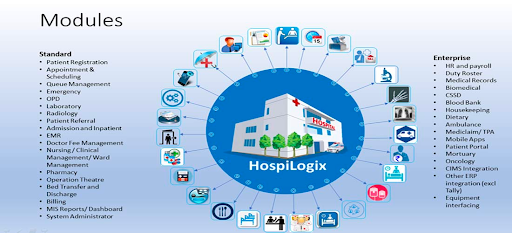
HospiLogix is a web based hospital management software that has been designed by Nextgen eSolutions. It helps hospitals of different types and sizes to manage their operations efficiently and effectively. The software is built on open source technologies and provides a user-friendly interface.
HospiLogix hospital software offers a range of modules that covers different aspects of hospital management such as patient registration, pharmacy, discharge, billing, and more. The modules are divided into 3 different parts which are general modules, additional modules and special modules. The user can decide which and how many modules they need for their hospital.
The system is compliant with HL7 and DICOM standards as well as NABH and NABL accreditation. It provides MIS reporting which helps in better decision making. The software is considered among the top 5 hospital management software in India as it is a reliable, scalable and customizable software system.
4. Medstarhis Hospital Software
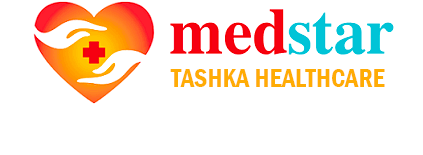
Medstar HIS is among the best hospital management software in India. It is a comprehensive hospital management software (HMS) that integrates various hospital systems, processes, and machines into an intelligent information system. The system is designed to improve the patient care and workflow of hospitals and healthcare professionals.
The system supports decision making through real-time reporting, management information system (MIS) and analytics. This hospital software aims to create a paperless hospital environment and manages daily activities such as patient admissions, discharges, doctor listings, pharmacy management, report generation, HR, and payroll.
Apart from the efficiency in hospital operations, Medstar HIS offers data security at every level, along with reliable storage and backup facilities.
Medstar HIS has mobile compatibility, and compliance with NABH standards. It provides dedicated support and can be deployed on the cloud, allowing users to access data without geographical limitations.
5. Hms365Cloud

Hms365Cloud is a web based hospital and clinic management software designed for very small and small healthcare institutions, individual doctors, and physicians. The system is considered among the best hospital management softwares in India as it aims to improve the quality and management of hospital health care and clinical care.
The system offers various features that are sensitive to the needs of hospitals, such as patient records, doctor records, pharmacy information system, in-patient service, out-patient service, operation theater, e-prescription, and more.
Hms365cloud hospital management software is compliant with HL7 and DICOM standards, as well as NABH and NABL accreditation. The software also provides comprehensive and dynamic MIS reporting with statistical analysis, accessible remotely for better decision making by management.
The software is a configurable, customizable, and modular solution that can be integrated with any HL7/R232 compliant medical equipment and third party applications. It is a reliable, scalable, and affordable solution for hospital management.
Above were a few HMIS systems recommended by industry standards. Now, let’s explore the top 5 free/open source hospital management software in India.
Top 5 Free/Open Source hospital management software

Chikitsa is the best open-source hospital management software. It is a PHP-based, self-hosted HMS solution designed for clinics and small hospitals to manage clinical workflows efficiently. The solution supports extensions and integrates with various other open-source CMS solutions like WordPress and SMS.
With this software solution, healthcare professionals can facilitate the appointment scheduling facility to their patients along with their follow-ups and notification alerts via SMS. It also includes patient records management, allowing doctors to access visit histories, diagnosis, and medications while safeguarding patient privacy through user access controls.
Chikitsa’s inventory management module aids professionals in stock monitoring, and the billing management feature allows for the customization of bill and prescription templates. The reporting function provides data on appointments, bills, and treatments, which can be exported to Excel. Additionally, Chikitsa supports multiple user groups and permissions, ensuring that staff have appropriate access to functionalities.
Overall, Chikitsa Hospital Management Software offers a modular and scalable solution for healthcare facilities seeking a cost-effective way to manage their operations and patient care.

OpenEMR is a leading open-source electronic health records (EHR) and medical practice management solution. The solution is known for its flexibility, offering a feature-rich platform that supports over 30 languages and numerous customizations.
The software includes advanced scheduling, e-prescribing, medical billing, CMS reporting, and lab integration. Its clinical decision rules engine aids in providing high-quality patient care. OpenEMR also emphasizes security with fine-grained access control and industry-standard password hashing.
OpenEMR’s vibrant community of volunteers and contributors maintain its critical features and provide free support. The software is suitable for outpatient and inpatient users, offering hybrid support, advanced billing, FHIR integration, cloud offerings, and quality reporting. It also connects low-cost medical devices, meeting the diverse needs of healthcare providers worldwide.

OpenMRS is an open-source Electronic Medical Record System (EMR) that offers a flexible and adaptable platform for healthcare facilities. It is designed to be customizable to meet the specific needs of various healthcare environments, particularly in resource-constrained settings.
The system is built on a modular architecture, allowing for easy expansion and integration with third-party libraries. It supports multiple languages and provides a robust API for further development. It includes features such as patient repository, embedded patient workflows, and role-based permissions, ensuring comprehensive management of patient records.
OpenMRS is not only a software solution but also a community-driven project that continuously develops new features and modules. It is written in Java and comes with extensive documentation to assist with development and deployment. The platform is ideal for users who require a customizable and scalable EMR system that can grow with their healthcare facility’s needs.

Bahmni is an open-source hospital management software that integrates OpenMRS, OpenELIS, and OPENERP to manage patient records across various healthcare domains. It is designed for low-resource settings and is accessible to staff with varying literacy levels. The Bahmni Coalition periodically updates the software, ensuring it remains relevant and efficient. The system supports data export in multiple formats, including CSV, PDF, HTML, and XLS, catering to different reporting and record-keeping needs.
Bahmni emphasizes a community-supported structure, relying on user feedback to guide development and ensure continuity. This approach has led to successful implementations in hospitals across countries like India, Bangladesh, Cambodia, Nepal, Sierra Leone, Pakistan, Ethiopia, and the Philippines. The software’s features include patient registration, records management, in-patient management, lab management with sample tracking, stock management, billing, accounting, and a reporting system compatible with Microsoft Office applications.

OneTouch EMR is a cloud-based, free hospital management system that emphasizes ease of use and flexibility. It allows healthcare providers to enter data through touch, typing, or dictation, catering to different user preferences. The system integrates laboratory functionalities to streamline workflows and improve patient care.
The software supports online medical charting, data import from external systems, and drawing and annotation features, providing greater flexibility in recording patient observations. OneTouch EMR is designed to be intuitive making it an ideal choice for small clinics and solo practitioners who need a straightforward and efficient EMR solution.
OneTouch EMR stands out for its user-friendly interface and the ability to adapt to various medical practice needs without requiring hardware or server installations. This makes it a cost-effective and accessible option for healthcare facilities looking to digitize their patient management processes.
Why Aarogya HMS
Here are some key points that make Aarogya a leader in the industry.
- Superior Security
- Dedicated Support Team
- Flexible
- Endorsed by Authorities
- Comprehensive Functionality
- Incredibly User Friendly
Unmatched Integration Facility
With its unmatched integration capabilities, Aarogya allows the system to connect with various external systems and devices.
ABDM
Aarogya supports ABDM, which is a national digital health mission that aims to provide universal health coverage and digital health records to the citizens of India.
As of December 2023, over 52 out of 919 health tech innovators participating in the ABDM Sandbox have achieved full integration across three levels, and Aarogya is among the first ones
Tally
Aarogya integrates with Tally, which is a popular accounting software that helps to manage the financial transactions and reports of the hospital.
Biometric
Aarogya software supports biometric authentication, which is a secure and convenient way of verifying the identity of the staff and patients.
KIOSKS
Aarogya HMIS supports KIOSKS, which are self-service terminals that allow the patients to check-in, register, pay, and print receipts without any human intervention.
WhatsApp and SMS
Aarogya HMS supports WhatsApp and SMS, which are effective communication channels that enable the hospital to send reminders, alerts, reports, and feedback to the patients and staff.
According to results of a survey from Accenture, 73% of patients prefer receiving appointment reminders via text message.
Also Read: 5 Ways Hospital Billing Software Can Save You Money
Wrapping Up- Best Hospital Management Software
In conclusion, Hospital management software is a crucial solution for enhancing the performance and quality of healthcare services. It can help you to automate business operations, manage data, streamline workflows, and improve patient satisfaction.
Among given hospital management software, we recommend Aarogya HMIS as the best choice for your hospital. It offers a cloud-based deployment option, which can save you the cost and hassle of maintaining hardware and software. Aarogya HMIS is trusted by more than 5000 hospitals across India, and has received positive feedback from its users.
If you want to experience the benefits of Aarogya HMIS, you can request a free demo or a quote from the website.
Hospital Pharmacy 101: What It Is, Why It Matters, and How to Manage It
If you work in a hospital, you know how important it is to have a well-functioning pharmacy department. The pharmacy department is responsible for providing medicines and medical devices to the patients and staff, as well as ensuring their safe, effective, and efficient use.
But managing a hospital pharmacy is not an easy task. It involves a lot of planning, organizing, implementing, and monitoring of various policies, procedures, and systems. It also requires a lot of coordination and collaboration with other departments and units of the hospital, as well as with external stakeholders and partners. And it demands a high level of knowledge, skills, and professionalism from the pharmacy staff and other members of the health care team.
That’s where the role of the pharmacy management software comes in that can help you run your hospital pharmacy more smoothly and effectively. These systems are designed to meet the specific needs and challenges of hospital pharmacy, and to offer you a range of benefits and features that can make your work easier and more rewarding.
In this blog, we will tell you more about what hospital pharmacy is, why it matters, and how to manage it. We will also show you how our pharmacy management software can help you improve your hospital pharmacy performance and outcomes.
What is Hospital Pharmacy | Hospital Pharmacy Definition
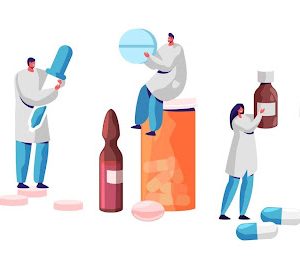
Pharmacy Management System
The department of the hospital that deals with procurement, storage, compounding, dispensing, and distribution of drugs is hospital pharmacy. These pharmacies are located within the hospitals or healthcare facilities. Apart from dispensing medicine for IPD patients, a hospital pharmacy may also dispense medicine over-the-counter and prescription medicines to OPD patients.
Also Read: OPD vs IPD
As per a patient’s medication schedule, hospital pharmacies provide medications to the wards and to ICU. Hospitals dealing with a larger number of patients use Pharmacy Management Software to speed up the process of medicine distribution.
Hospital pharmacists are the experts on medicines and medical devices in the hospital. They work closely with doctors, nurses, and other health professionals to ensure that patients receive the best possible treatment and care.
As per Guidelines on World Health Organization, hospital pharmacy is defined as “the area of pharmacy concerned with the science and practice of rational medication use in hospitals and other health care facilities”.
Also Read : LIMS(Laboratory Information Management System) and Its Function
But first let’s discuss the difference between a Hospital Pharmacy and a General Pharmacy.
How Hospital Pharmacy is different from General Pharmacy?
Typically the functions of a Hospital Pharmacy are wider and need more organisation. They serve as the backbone of healthcare institutions. Let’s see some of the important functions of a hospital pharmacy.
| Hospital Pharmacy | General Pharmacy |
| Serves IPD and OPD patients of a hospital or medical center | Serves the general community, thus have a wider patient range. |
| Provides specialized or investigational medications | Provide common and over-the-counter medications |
| Prepares and dispenses sterile products like injections, fluids etc. | Prepares and dispenses Oral and topical products like tablets, creams etc. |
| Works closely with other departments of the hospital and health professionals | Works directly with customers to provide drug information and advice |
| May require additional education and training to develop advanced skills and specialization | May require customer service and business skills to manage the pharmacy |
Functions of Hospital Pharmacy
- First and foremost comes the selection of inventory. Your hospital pharmacy should be capable of medication therapy management (MTM) for your patients. This means that hospital pharmacists work closely with physicians, nurses, and other health care providers to select, prescribe, monitor, and adjust medications for each patient, based on their individual needs, conditions, and responses. Accordingly the pharmacy should maintain the stocks of medicines and handle the regular procurement.
- Hospital pharmacies have to supply and distribute medications and medical devices throughout the hospital across all departments. This involves managing the inventory, storage, and delivery of medications and devices. Also it is the job of these pharmacies to take care of the quality, safety, and security of these medical paraphernalia.
- Since these pharmacies deal directly with your patients it becomes their duty to provide information and education to patients and health care professionals. They have to ensure that they are communicative enough and understand the local dialect of your patients, so as to give them the best medical advice. Your pharmacy team is your D2C sales force, so the management has to be fast and efficient in handling operations.
These pharmacies are seemingly small but a crucial part of your hospital. Now that you know the functionality, let’s have a look at the challenges faced by them.
Challenges in Hospital Pharmacy Management
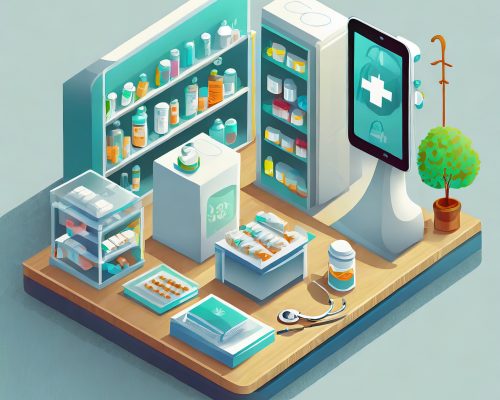
Challenges in Pharmacy Management
These are some common challenges that most hospital pharmacy management face:
Medication errors: These are mistakes that occur in the prescribing, dispensing, or administration of medications, which can cause harm to patients or reduce the effectiveness of treatment. Medication errors can be caused by factors such as human error, communication breakdown, system failure, or lack of knowledge. We all have heard jokes on Doctor’s handwriting. Funny however they may seem, this actually is one of the reasons behind incorrect medication. The Institute for Safe Medication Practices (ISMP) estimates that medication errors occur in 1 in every 135 medication doses administered in hospitals. This translates to a staggering number of incidents every year, with potentially serious consequences.A study published in the Journal of the American Medical Association found that a 10% increase in drug shortages was associated with a 5% increase in medication errors
Drug shortages: These are situations where the supply of a medication does not meet the demand, either due to insufficient production, distribution, or availability. Drug shortages can affect the quality and continuity of patient care, as well as increase the costs and risks of treatment.
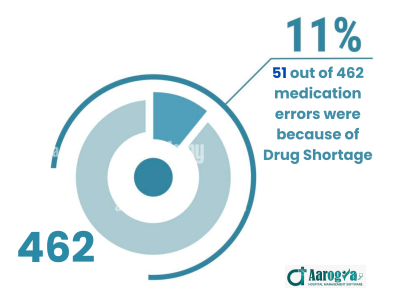
Drug Shortage Data
A French study of data on Adverse Drug Reactions(ADRs)
Ok, so the Hospital Pharmacy has its fair share of challenges and problems. These are not general issues that can be taken care of once and forgotten about. These are real life problems occurring in day to day lives caused due to human error, scarcity of resources or regular emergencies. To overcome these challenges, the hospital pharmacies should be prepared with an efficient Pharmacy management software. The usage of such tools however does not guarantee an error free solution always but helps the hospitals adhere to regular compliance and reduce the risk of emergencies.
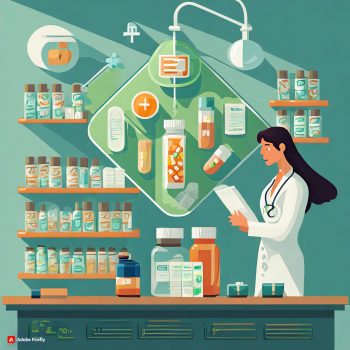
Advantages of pharmacy management
Advantages of a Hospital Pharmacy Software
Medication order entry and verification systems: These are systems that allow pharmacists to enter, review, and verify medication orders electronically, using standardised formats, protocols, and alerts. These systems can help reduce medication errors by eliminating handwritten prescriptions, detecting potential errors, and providing relevant information and guidance.As per a report published in the National Library of Medicine, Hospital pharmacies dispense an average of 3.5 million doses per year, equivalent to roughly 9,500 doses per day. That’s enough to fill an Olympic-sized swimming pool with medication bottles!
Real-time inventory tracking and alerts: Pharmacy softwares allow pharmacists to monitor and manage the inventory of medications and devices, using barcode scanning, RFID tagging, or other technologies. These systems can help prevent drug shortages by providing real-time data on stock levels, expiration dates, and usage patterns, as well as generating alerts and reports on supply and demand.
Clinical decision support tools: The system provides pharmacists with evidence-based recommendations and feedback on medication therapy, using clinical guidelines, algorithms, or databases. These tools can help optimize medication regimens by suggesting the most appropriate, effective, and safe medications, doses, and schedules for each patient, as well as identifying potential problems or opportunities for improvement.
Automated dispensing systems: These are systems that allow pharmacists to dispense medications and devices automatically, using robots, carousels, or cabinets. These systems can help improve efficiency and accuracy by reducing manual tasks, saving time and space, and ensuring the right medication and device for the right patient at the right time.
Enhanced dispensing accuracy: The solution helps hospital pharmacists verify and validate prescriptions, calculate doses, and label and package medicines and medical devices. It can also help them track and record the dispensing history and status of each patient. This can reduce dispensing errors, improve patient safety, and ensure compliance with legal and ethical requirements.
Increased productivity and efficiency: With the help of pharmacy management software, hospital pharmacists can automate and simplify their routine tasks, such as data entry, billing, and reporting. It can also help them integrate and communicate with other systems and departments, such as electronic health records, laboratory, radiology, and billing. This can save time, reduce workload, and improve workflow and coordinations.
Better decision making and quality improvement: Pharmacy management software can help hospital pharmacists collect and analyze data and information on various aspects of their pharmacy practice, such as drug utilization, drug costs, drug outcomes, and patient satisfaction. It can also help them generate and access reports and dashboards that can provide insights and feedback on their performance and progress. This can help them identify and address gaps, issues, and opportunities for improvement, and enhance the quality and value of their pharmacy services.
Also Read: 5 Ways Hospital Billing Software Can Save You Money
Wrapping Up
Hospital pharmacies are essential for providing safe and effective medication therapy for hospitalized patients, as well as for supporting other healthcare services and activities. However, hospital pharmacies also face many challenges and complexities that require innovative and efficient solutions. Pharmacy management software is the perfect solution for hospital pharmacies that want to improve their performance and quality of care.
If you are interested in learning more about our software and how it can transform your hospital pharmacy operations, please contact us today for enquiry or a free demo.
